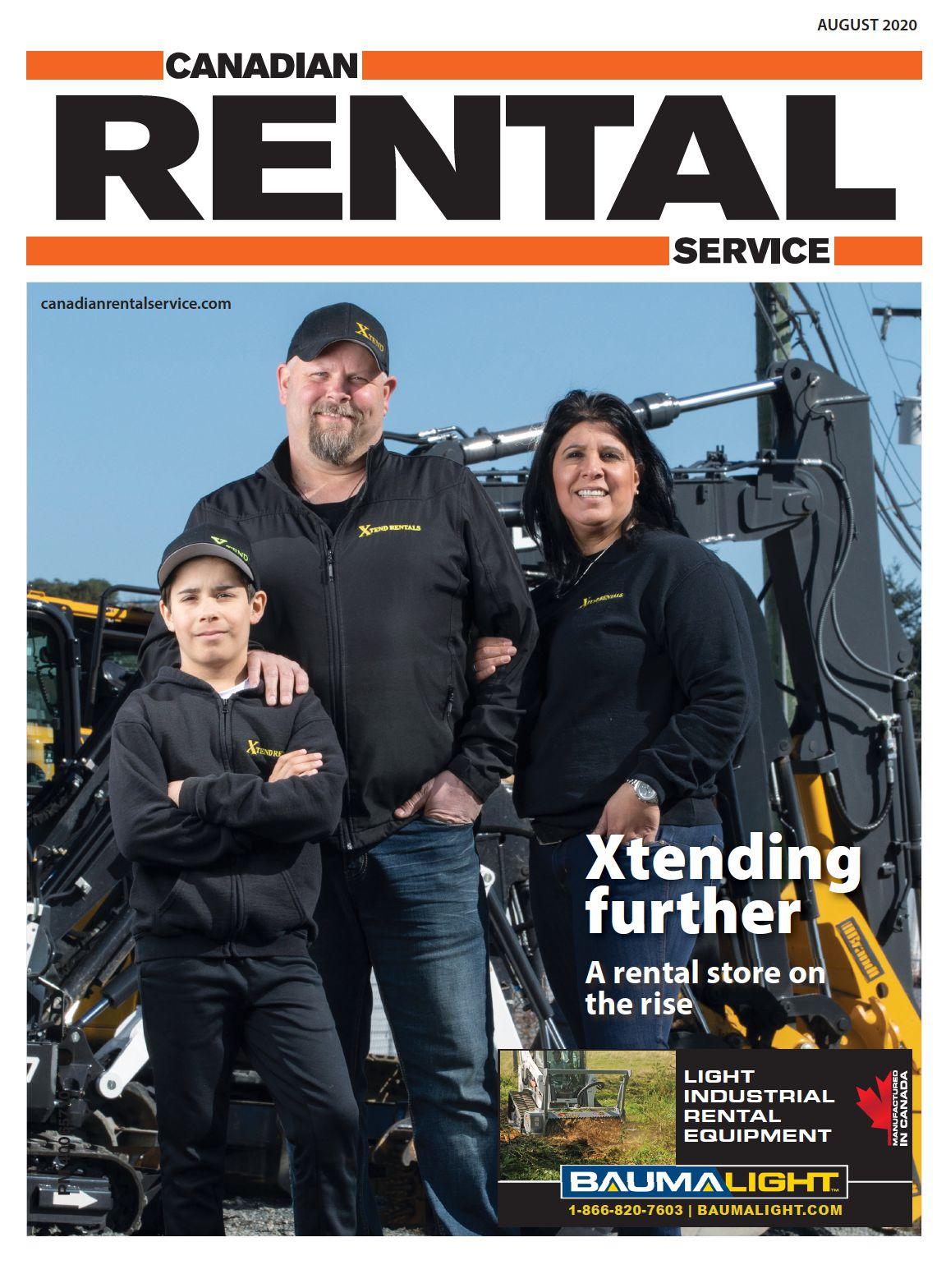
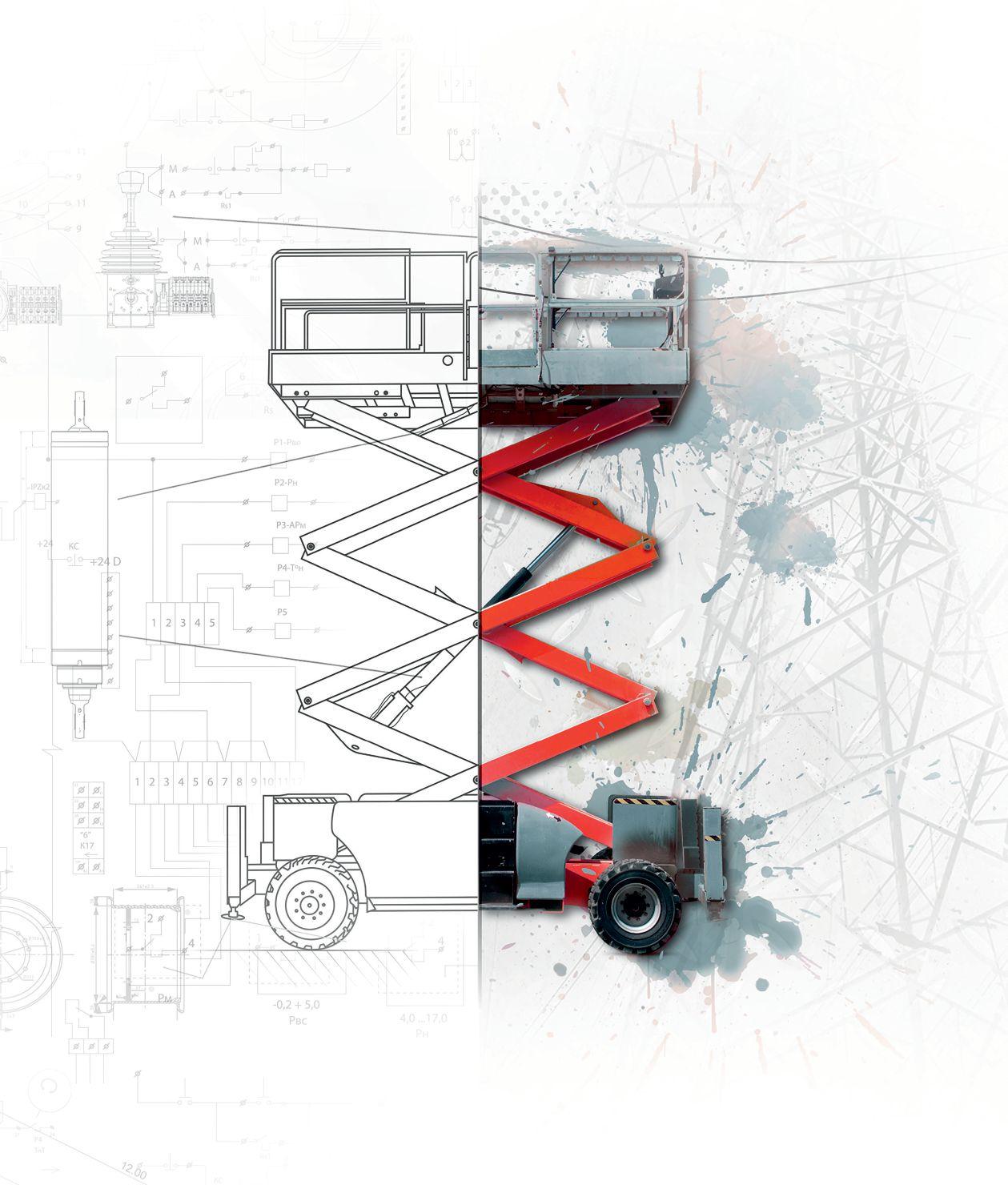



With access to more than 42 million part numbers, TVH is your One-Stop-Shop to keep your industrial equipment running at optimal performance.
Our mobile-friendly ecommerce site, online search tools, catalogs and videos give you complete access to quality replacement parts 24/7.
www.tvh.com

Annex Business Media P.O. Box 530, Simcoe, Ontario N3Y 4N5 (800) 265-2827 or (519) 429-3966
EDITOR I Patrick Flannery pflannery@annexbusinessmedia.com (226) 931-0545
PUBLISHER I Danielle Labrie dlabrie@annexbusinessmedia.com (226) 931-0375, (888) 599-2228, ext 245
ASSOCIATE EDITOR I Sukanya Ray Ghosh srayghosh@annexbusinessmedia.com (647) 203-7031
NATIONAL ACCOUNT MANAGER I Amanda McCracken amccracken@annexbusinessmedia.com (226) 931-5095
ACCOUNT COORDINATOR I Barb Comer bcomer@annexbusinessmedia.com (519) 429-5171, (888) 599-2228, ext 210
MEDIA DESIGNER I Lisa Zambri
CIRCULATION MANAGER I Shawn Arul sarul@annexbusinessmedia.com (416) 442-5600 ext. 3626
GROUP PUBLISHER/VP SALES I Martin McAnulty mmcanulty@annexbusinessmeda.com
COO I Scott Jamieson sjamieson@annexbusinessmeda.com
Publication Mail Agreement #40065710. Printed in Canada ISSN 0383-7920
Subscription Rates
Canada- 1 Year $45.00 + tax
U.S.A. - 1 Year $102.50 (CDN)T
Occasionally, Canadian Rental Service will mail information on behalf of industry-related groups whose products and services we believe may be of interest to you. If you prefer not to receive this information, please contact our circulation department in any of the four ways listed above.
Annex Privacy Officer Privacy@annexbusinessmedia.com Tel: 800-668-2374
All rights reserved. Editorial material is copyrighted. Permission to reprint may be granted on request.
Serving the Canadian rental industry for 44 years. canadianrentalservice.com

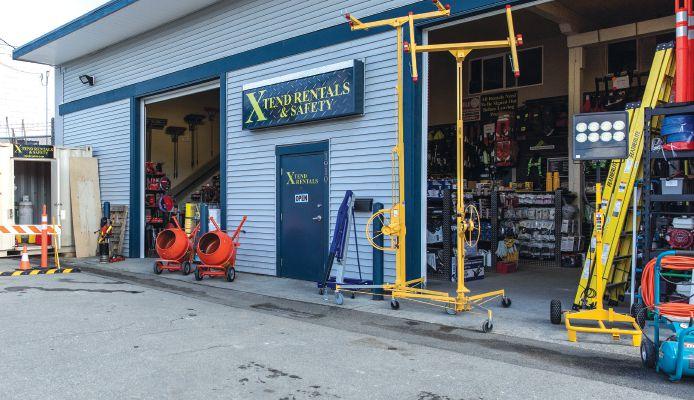
12 20 22 26
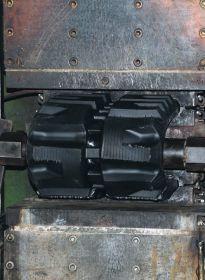

4 EDITORIAL
Our party and event rental stores could really use our help.
20 RUBBER TRACK FOR RENTAL EQUIPMENT
Why the rubber track market needs proper industry standards.
6 INDUSTRY NEWS
Melka now group president at Kohler… Wajax exclusive distributor of PowerBoss cleaning equipment… Leo Swan no more…
22 PLANNING FOR THE WORK AHEAD
Streamlining construction projects with intelligent 3D models.
10 AT YOUR SERVICE
Knowing when not to say “no” is key to customer satisfaction. By Russ Dantu
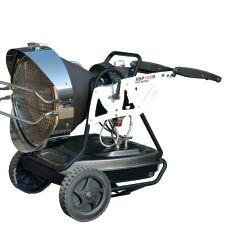
12 XTENDING FURTHER
How a home renovation opened up the doors to a full-fledged rental business.
26 HEATER SHOWCASE
Keep customers warm and operational with the latest heating equipment.
30 THE BIG EVENT
Finding alternate routes can keep event rentals operational in current times. By Tara Jacobs
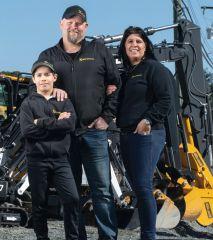

The equipment rental and the event rental industries have always been uneasy bedfellows within the overall rental industry. In many respects, they are much the same. Obviously, both are renting stuff to customers. Items are provided at a rate and for a time defined by a rental contract. The major business activity is customer service, warehousing, maintaining and delivering the rented items. Lots of stores rent both equipment and party supplies. There’s even some crossover in the items rented – event rental stores often carry heaters, generators and outdoor lighting.
But once you get an inch deeper than the surface similarity, you find two very different businesses. The challenges of handling tables, linens and tents are quite different from the challenges of handling skid steers, plate compactors and scissor lifts. The main target demographics of each business are almost opposites: direct to the general public and event planners with a heavy female skew, versus business-to-business and DIYers with a heavy male skew. Party stores have experts in tent erection. Equipment stores have mechanics. Sales in a party store happen around a nice table with a cappuccino. Sales in an equipment store happen in a muddy yard. Event rentals relies on being able to offer 100 different items that perform the same basic function. Equipment rentals requires an item for each of 100 different functions.
CounterTalks: Focus on customer service with Russ Dantu CounterTalks, the podcast for the Canadian Rental Industry, spoke to Canadian Rental Service columnist, Russ Dantu, about how to maximize your customers’ experience in your store. Dantu and Canadian Rental Service editor Patrick Flannery get into big box versus Mom-and-Pop approaches to service, service automation, how to build relationships and organizations that can help business owners improve their service. This an other episodes of CounterTalks can be found online at canadianrentalservice.com > Podcasts, or by subscribing to CounterTalks on iTunes, Spotify, SoundClound and other popular podcasting services.
by Patrick Flannery

These differences pale to insignificance next to the difference in the impact of the pandemic on the two sectors.
Construction and all its support industries were declared essential in all provinces from the outset of the lockdown, with a few more restrictions for a couple weeks in April in Ontario and Quebec. Equipment rental was specifically called out in the orders in several jurisdictions as an essential service. This meant service to contractors could continue, albeit with special measures to clean equipment, maintain distancing during deliveries and implement online ordering, contract signing and payment. Homeowner rentals were slowed in some areas by requirements to limit the numbers inside stores and do curbside pickups, but at least stores could continue to do business at some level. Some stores even reported upticks in business as bored shut-ins turned to those home improvement projects they’d been putting off for years. The American Rental Association’s reports show the average member taking about a 15 percent decline in business.
Just read Kim Rixon’s report on page eight for a stark illustration of how different it’s been for the event rental industry. She’s estimating Muskoka Party Rentals has lost 90 percent of its bookings for the entire year. In her best-case scenario, that will translate into about an 85 percent decline in 2020 revenues. The store is completely shut down and none of the seasonal staff brought back. The backlog created by events deferred to next year means new business for 2021 cannot be accepted, causing cash flow from deposits to dry up. In Ottawa, Mike Wood of Ottawa Special Events has become something of a hero by appearing on local and national media, and in front of House of Commons committees, to advocate for stronger measures to help small businesses like his. Unfortunately, he’s had the time because, like Rixon, OSE has been nearly mothballed by the cancellation of the events it depends on.
One of the remarkable things about rental industry has always been our eagerness to help one another. What do you say, equipment rental operators? Let’s reach out to our friends in the event rental sector today and see what we can do to support them in this terrible time. CRS

Canadian Rental Service’s editor
Patrick Flannery as he talks to prominent people and top experts about issues and opinions, challenges and solutions, tips and tricks to help your business. Counter Talks is where you’ll hear the voices of our industry.

Kohler has named Brian Melka as the group president for power. He reports to president and CEO, David Kohler. Prior to this appointment, Melka was serving as the president for engines since February, 2019. As group president, Melka provides full-scope strategic and operational leadership and is responsible for accelerating growth and profitability of the global power group businesses – power systems; Kohler engines; Clarke energy and Kohler uninterruptible power. Melka joined Kohler in 2013 as vice-president of Kohler engines in the Americas. He delivered consistent results and the best run of profitable growth in the history of the engines business. In his most recent role as president of engines, Melka oversaw leadership of the global engines business, which includes engines Americas, engines China and engines EMEA, and executed strategic plans for both the gasoline and diesel markets. He brings a passion for winning and building high performing teams. Prior to Kohler, he held senior leadership roles with Rexnord and Textron including vice-president of global mining and product management and director of product management and service. A graduate of the University of Wisconsin-Madison, Melka holds a bachelor’s degree in finance. He has an MBA from the University of Wisconsin-Whitewater and holds International Business Certification from Thunderbird School of Global Management. He is also a certified Six Sigma master black belt and change management coach.
Wajax is now the exclusive Canadian distributor of PowerBoss industrial cleaning equipment throughout Wajax’s nationwide branch network. Since 1985, PowerBoss has been manufacturing a full line of rugged industrial cleaning equipment. PowerBoss is owned by the Germany-based company, Hako, which is an international manufacturer and producer of cleaning products and technology. Innovative design features and cost-effective, reliable operation are cornerstone qualities of the PowerBoss line. Wajax is offering the full range of PowerBoss commercial, industrial and institutional cleaning equipment. The products which Wajax now offers for sale include rider, walk-behind, and combination sweepers and scrubbers. These products are available in a variety of sizes and configurations. Wajax now also sells a line of chemical cleaning agents offered by PowerBoss which can be used with PowerBoss equipment.
“We are excited to partner with PowerBoss, a first-class manufacturer. This line of high-quality equipment is a natural fit with the other products which we offer to our customers. Adding the PowerBoss line of equipment expands our product offering to our customers,” said Brian Kolthof, vice-president of material handling at Wajax.
PowerBoss and Wajax are fully aligned with a safety-first perspective. PowerBoss equipment undergoes stringent quality control in all aspects of the manufacturing process. When maintenance is required, the design of PowerBoss equipment allows for easy access to internal mechanisms. Wajax service centres and technicians are well versed in PowerBoss service and maintenance requirements. With training, technical knowledge and a vast branch network, Wajax offers its customers end-to-end product support.
Wajax is a 160-year-old construction equipment supplier with over 100 locations across Canada. It is publicly traded under WJX.TO.
The American Rental Association has launched the latest element of its “Clean. Safe. Essential.” initiative for construction equipment rental companies with the availability of a “Clean. Safe. Essential.” training certificate program. The online training program for ARA members is designed to help keep the rental experience safe during and after the COVID-19 pandemic. Available online through RentalU, the “Clean. Safe. Essential.” training certificate program features a variety of learning modules to help member construction and general tool rental stores ensure the cleanliness and safety of all rental operations, employees and customers. Topics covered in the comprehensive training include supplies needed, preparations to make, safety considerations, and a cleanliness checklist. Upon completion of the “Clean. Safe. Essential.” training program, ARA members will receive a certificate and an implementation kit for their specific location. ARA will continue to refine the training program with modules updated, added or replaced as necessary. The “Clean. Safe. Essential.” training program provides member stores with consistent training on measures to minimize exposure to the coronavirus for customers, staff, vendors and guests. Training is based on expertise from the U.S. Centers for Disease Control and Prevention, World Health Organization, rental operators and equipment manufacturers. While the training is based on medical science and operational expertise, ARA directs rental stores to comply with the latest local/city, state/province, and country laws and government regulations, and to conform with guidance provided by government health agencies. If government guidance is more stringent than what is found in the training, ARA says that stores should follow government guidance.
Sunbelt’s fiscal year-end report to shareholders reveals severe but survivable impacts from the pandemic to the international rental giant. Here’s the overview presented by Ashtead’s chief executive, Brendan Horgan:
“In simple terms, the year can be characterised as pre-COVID-19 and post COVID-19. We were on track for another record year when the COVID19 pandemic changed the world for everyone. We are proud to report that, despite an unprecedented ‘black swan’ event, we are still able to report strong results for the year. There has, of course, been an impact on our fourth quarter results, but the underlying strength of the business and our performance in the first three quarters of 2019/20 mean we have continued to perform well overall. While trading volumes were lower in the second half of March and April, this has been mitigated, in part, by emergency response efforts throughout our business units but particularly within our specialty businesses. Sunbelt Rentals is designated as an essential business in the U.S., U.K. and Canada,
supporting government and private sector responses to the pandemic. As a result of the market dynamics, rental revenue for Sunbelt U.S. in March was three percent higher than prior year and in April was 12 percent lower than prior year. This is due to the general tool business being 15 percent lower than prior year in April, while the specialty businesses were nine percent higher than last year, with the reduction in the general tool business being driven by declines in volume rather than rental rates. This contributed to group rental revenue in the fourth quarter one percent lower than the prior year at constant exchange rates. Since April 10, we have seen U.S. fleet on rent stabilise and then increase as our markets adjust to new working practices and restrictions eased gradually. The trend has been similar in the U.K. and Canada. In early March, we took steps to optimise cash flow, reduce operating costs and further strengthen our liquidity position including, but not limited to, reducing planned capital expenditure for the year ending April 2021; suspending all current and
prospective M&A activity; pausing our share buyback programme; implementing a group-wide freeze on new hires and reducing discretionary staff costs; and use of third-party freight haulers and other operating expenditures consistent with reduced activity levels. We now expect capital expenditure of £500 million in 2020/21. In addition, on April 24, we accessed an additional $500 million of liquidity through the group’s senior secured credit facility, increasing the facility size to $4.6 billion for the next 12 months. A skilled workforce is instrumental to the group’s long-term succes; we have made every effort to preserve our committed workforce for the impending recovery. Therefore, we have not made any team members redundant as a result of the impact of COVID-19. With strong market positions in all our markets, supported by good-quality fleets and a strong financial position, we believe that we are well positioned to respond to this market uncertainty and continue to support our customers and team members.”
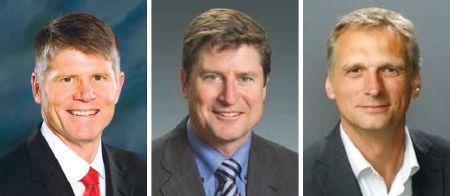
Terex Corporation has announced that John L. Garrison Jr., chairman and CEO of Terex Corporation, will take on additional responsibilities as president of Terex aerial work platforms, effective immediately. Current AWP president Matt Fearon is leaving the company on Aug. 1 after 25 years with Terex, AWP and Genie, AWP’s flagship brand. Simon A. Meester, vice-president of global sales and marketing administration for AWP, will be promoted to COO of Terex aerials. Meester and Clint Weber, general manager of Terex utilities, the company’s other business in the AWP segment, will both report directly to Garrison. The Terex executive leadership team will continue to report to Garrison in his role as chairman and CEO of Terex Corporation.
“We thank Matt Fearon for his many contributions to Terex,” said Garrison. “Matt has been a dynamic and muchadmired leader who helped Genie grow from a regional brand to a global powerhouse. He arrived as an engineer 25 years ago and went on to key roles including vice-president of operations, vice-president and managing director of EMEAR; vice-president and general manager for the Americas; and ultimately president of AWP.”
Meester joined Terex in 2018 from Eaton Corporation, where he was vice-president and general manager of its industrial control division. Earlier, he spent 14 years in progressively senior roles at Caterpillar, before becoming president of Sandvik Mining and Construction in India. He has managed global teams and operations for 20 years, based in seven countries, including eight years in the United States. He holds an MBA from the University of Surrey, England, and a bachelor of science in automotive engineering from Apeldoorn, Netherlands.
“I look forward to working closely with Simon and Clint and their terrific teams at Genie and Utilities,” noted Garrison. “We congratulate Simon on his expanded responsibilities and we send best wishes to Matt for continued great success in the years ahead.”
Kim Rixon, owner of Muskoka Party Rentals in Bracebridge, Ont., sent the following email:
I have been the sole proprietor of an event and tent rental business for the last 16 years. I started my business in 2003 and have gone through many downturns in the economy but due to the shutdowns for COVID-19 the doors to my business have been closed since March. While other businesses are reopening and hoping to salvage a summer season from 2020, I am still sitting with doors closed as a direct effect of cancellations of weddings and events from March until August and beyond. Since March of 2020, we have lost 90 percent of our bookings for 2020 and will be unable to recover the earnings we would have earned for weddings and events this season. As a seasonal business, we rely heavily on our late spring, summer and fall bookings to carry us through the winter and into the next year. Normally, we generate over $600,000 per year but this year we will be very fortunate to generate $100,000 if we are able to resume business in July. In a normal year, we take deposits over the fall and winter for events which are going to happen the following year. The majority of our events have been moved to 2021. We have already collected these deposits and we will not be receiving many deposits over the fall and winter of 2020/21. Not only will we not be receiving deposits but most of the dates are taken for 2021, thus dramatically limiting the number of new events we can accept. We employ 18 to 20 seasonal staff, comprised of university students who spend summers in our area as well as yearround residents who rely on us for their summer employment. In 2019, we paid over $300,000.00 in wages to our staff. This year we have been unable to rehire any of our staff as we do not have work for them. The event, wedding and tent industry has been extremely heavily hit and will not recover as easily or quickly as many industries, as we rely on large groups of people rather than individuals to maintain our businesses. My business cannot afford another loan to pay off. We need genuine monetary assistance in the forms of grants or bailouts like those given to car companies in the past. We are hard-working, proud people who want to help your children have their dream weddings, for you to have a surprise party for that special someone, for you and your friends to go to concerts, trade shows, conferences, festivals, and a whole myriad of events that I’m sure you haven’t even thought our industry deals with. We are the event planners, tent installers, and conference workers who rely on large gatherings for our livelihoods and this joy has been stripped from us, forcing us to sit and wait while our businesses slowly sink into oblivion. We deserve more respect than this.
Leo Swan, one of EDCO’s co-founders, passed away on May 4. He was 93 years old. He had once worked at Rental Tool and Equipment in Silver Spring, Maryland, working alongside John Doran Sr. and Ed Harding. While working there, Swan found that customers were repeatedly seeking a machine for resurfacing concrete, especially large areas. Harding and Swan came together to create the first dual-disc concrete grinder in 1959 and create Equipment Development Company. As the company and product line grew, Swan never wavered from his relationship-centric business mindset with his employees and customers. That commitment helped EDCO evolve from a three-man operation into the 100-plus employees it has today, all while still remaining a family-owned business. Swan’s insatiable entrepreneurial spirit was apparent throughout his life, as he was involved and interested in every phase of his manufacturing company from assembly to marketing to sales. His legacy is defined by the indelible imprint on the lives of his family, EDCO’s employees and customers, along with the contributions he made to the rental industry as a whole.


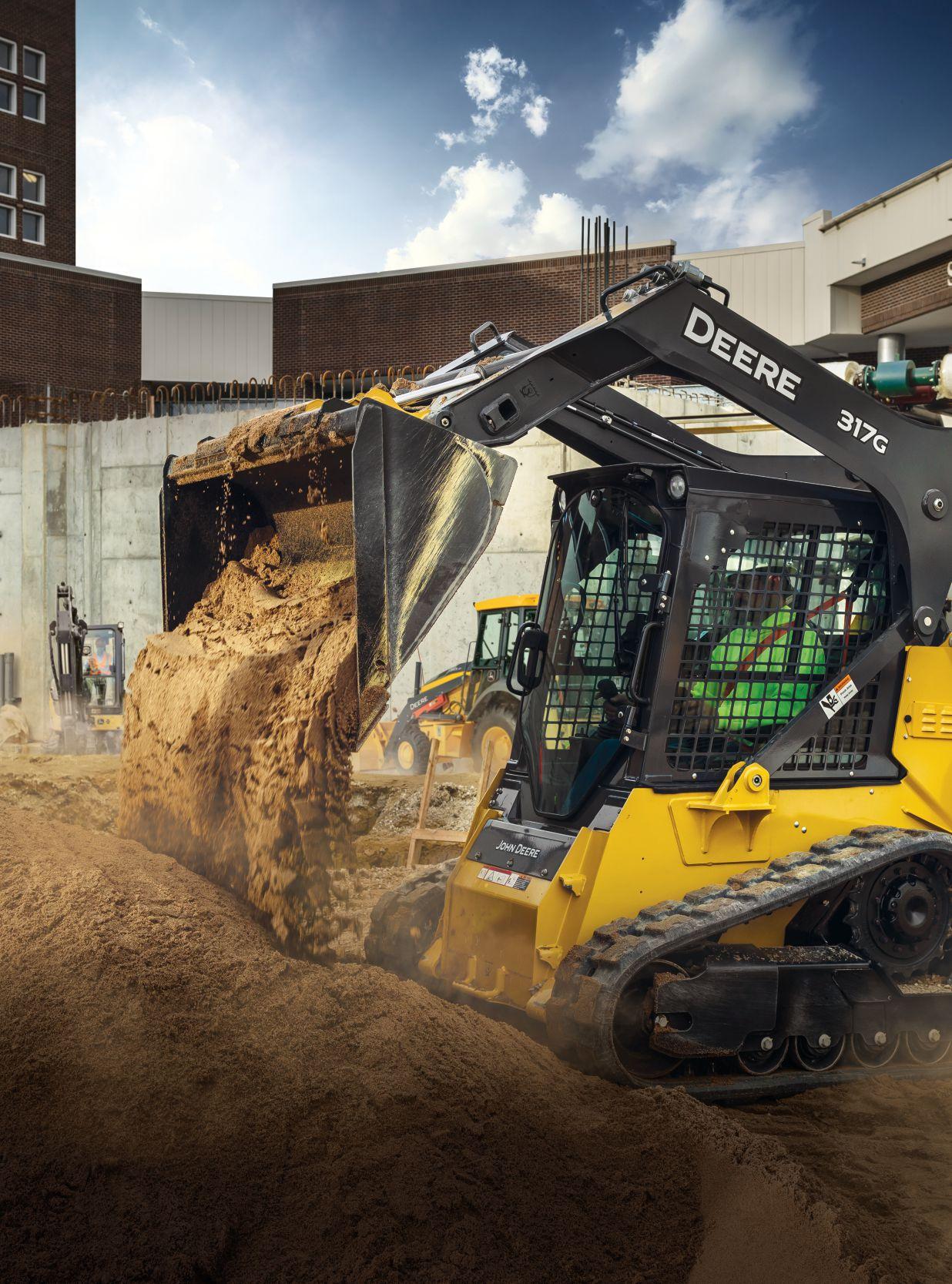
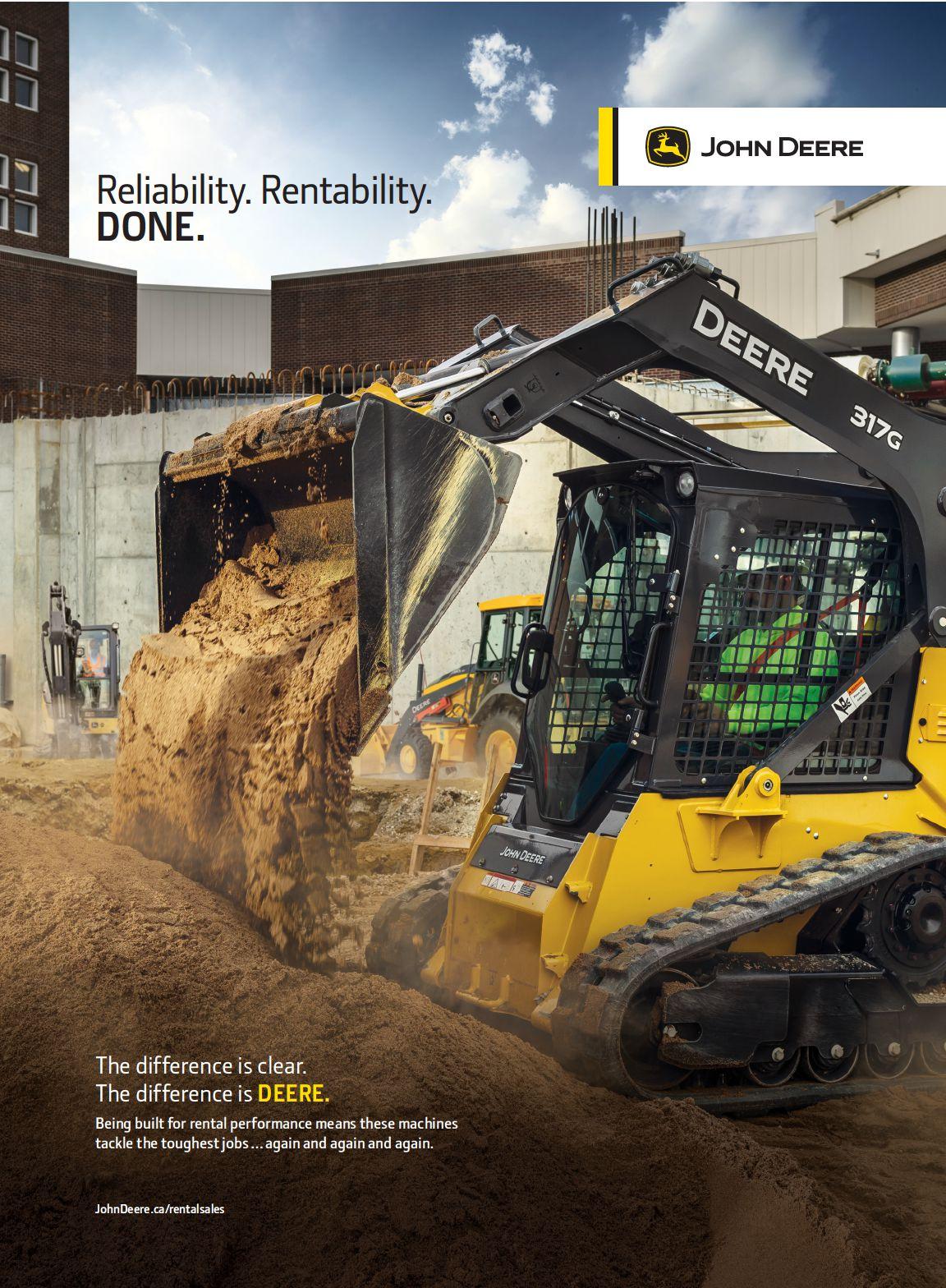
by Russ Dantu
Iwas stocking up on some wine just before the pandemic set in. I mainly stop in at Costco if I have to buy wine, beer and spirits and have extra time on my hands, as it’s usually quite busy. But the pricing is right.
On this day, I was heading to the local liquor store that I have supported for many years. There are four to choose from within two minutes of each other but I’ve just always found what I wanted, at a price I wanted, and they treat me pretty well when I go there. For some reason, I decided to go to the big box liquor store that was just across the parking lot from my regular spot: Liquor Depot.
I walked in, got a basket and started checking out the various wines from around the world. I didn’t see that many of my favorites so I chose several that were new to me and a few that I drink quite often if I’m having wine. I then grabbed a sixpack of Sapporo beer (I love this Japanese beer), and headed to the front to check out.
The young lady smiled and asked if I needed anything else. I said “Just an empty wine box to carry the 10 bottles I am purchasing, please and thanks.”
“Sorry sir. We don’t give away our empty wine boxes anymore.”
“Umm, ok, but I cannot carry 10 bottles without a box.”
“We are selling these wine bags. They hold four bottles. You can buy three and you’ll be set.”
“Yeah, I don’t really want any more bags in my house, thanks, and I’m definitely not interested in paying for bags when a cardboard box will work.”
“Well, I’m not allowed to give away our boxes.”
“Well, I guess I’ll go somewhere else to buy my wine and beer today then.”
“Sorry sir. Those are our rules here and I have to follow them. It’s been like that for quite a while.”
I looked at her with that “dazed and confused” look at the absurdity of her answer, stepped out of line and actually put the bottles back where I found them (I probably should have just placed them at her feet and told her to deal with it as I was quite miffed at how she was handling the situation). She smiled and said, “Have a nice day!” as I left the store…which infuriated me
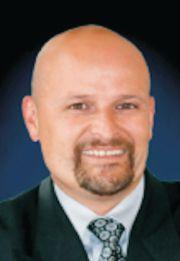
even more.
I then went across the street to my usual place and bought 12 bottles of wine and some Sapporo (did I mention that I love that beer?). It came to just over $220. They treated me well…and even gave me a box to put it in!
This got me thinking. Who in their right mind would tell their staff to not give out cardboard boxes for the few people who ask for it? Who wouldn’t say to their staff that if it meant losing a $200-plus order that they should definitely get a box for the customer? Who in their right mind would come up with this rule to start with?
The bags were $1.99 each so not a lot of money but if you’re like me, you probably have too many bags sitting in your home already.
It also reminded me of a great video I encourage you to watch. Google “Give ‘em the pickle!” and see what this restaurant owner is talking about. A great story and pretty much the same as what I went through with the liquor store.
So many businesses seem to be missing the mark on the way they conduct their business. Like the liquor store, they are leaving money on the counter.
I don’t mean to whine about the wine issue but it just frustrates me when I see so many businesses struggling and some simple common sense could definitely add to their bottom line. With the pandemic, it’s more important than ever now to really step up our customer service practices. When it comes to a new customer walking in the door, we usually only get one chance to do it right. If the impression is as poor as the liquor store incident, we too will be missing out on a lot of revenue.
Are you leaving money on the counter? Are you implementing rules that drive your customers away?
I fully intend to reach out to Liquor Depot to see what their logic is. I’ll let you know if they listen or tell me to put a cork in it. CRS
Russ Dantu is a 30-year veteran of the rental industry and has been delivering workshops, seminars and keynotes on customer service for over 15 years. Visit russdantu.com.









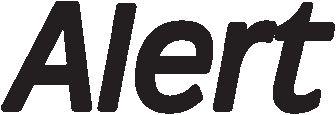



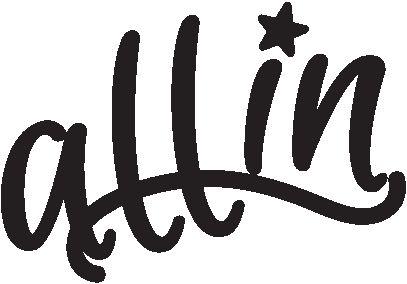


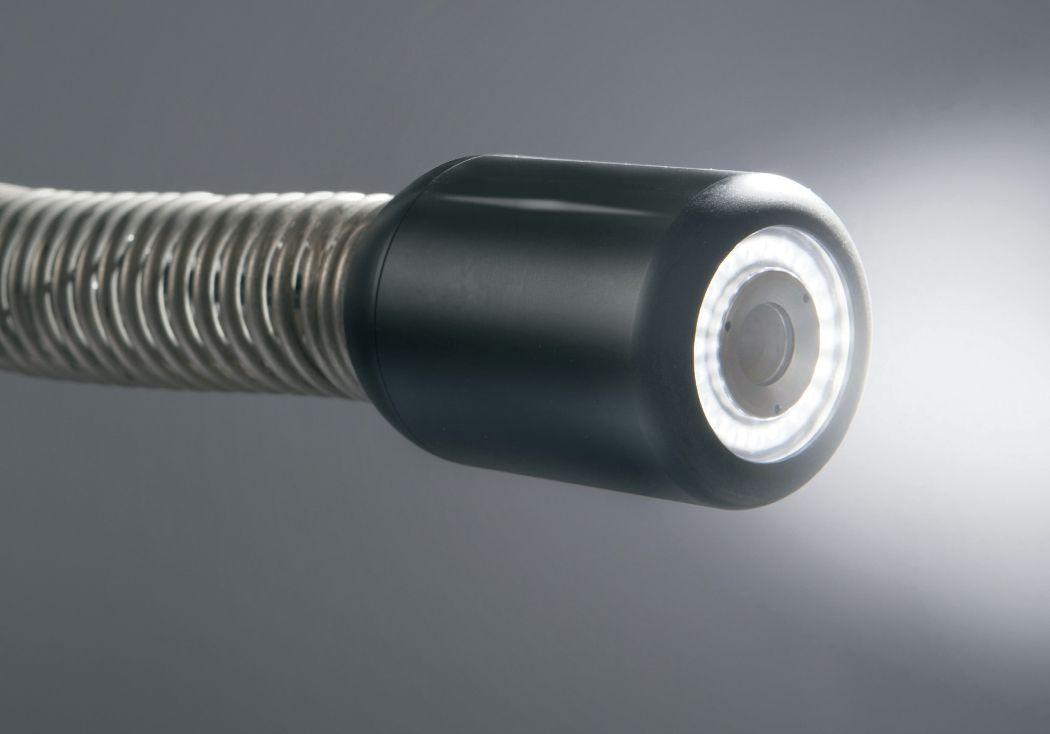

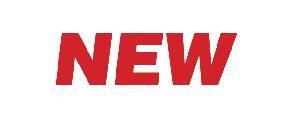
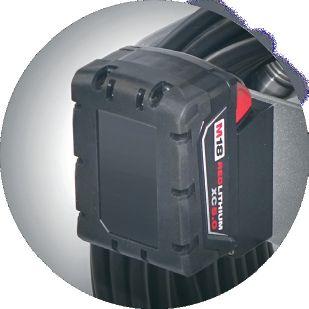
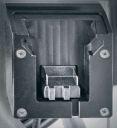

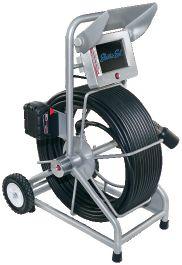
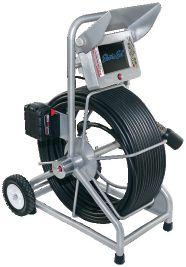
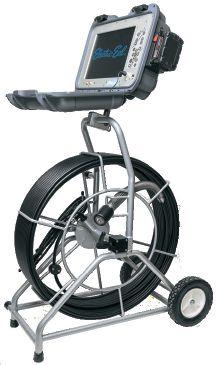
by ANDREW SNOOK
Asmall company based out of Ladysmith, B.C., is making a name for itself as one of the go-to equipment rental and safety gear supply stores on Vancouver Island.
Xtend Rentals and Safety was started up a little over three years ago by Bill Robinson, shortly after he moved to the island seeking a change in lifestyle after working in the farming and mechanical contracting industry for 31 years.
“I own a plumbing and heating company on the mainland: Maple Ridge Mechanical,” says Robinson. “The company got too big for one person to comfortably manage in 2015-16. My stress level was through the roof managing up to 41 projects and 27 people at a time.”
While watching a reality show on television in 2016 about couples that relocate to remote islands, Bill joked to his wife that they should
move to the island. They would be closer to his family and their son, Braydon’s, cousins.
Bill’s wife, Bonnie said, “You’d never live away from your business,” he recalls.
Fast-forward 12 months and Bill and Bonnie were re-settled in Ladysmith on Vancouver Island. Little did the couple know that they were going to be getting into the equipment rental business shortly afterwards.
“The house needed a little renovation and landscape work, so I bought a Bobcat miniexcavator,” Bill recalls. But after he completed his landscaping work on their property, the machine just sat there doing nothing. When
Bill Robinson’s decision to rent out his Bobcat mini-excavator through a Craigslist posting started him on the path to building his Xtend Rentals and Safety business.
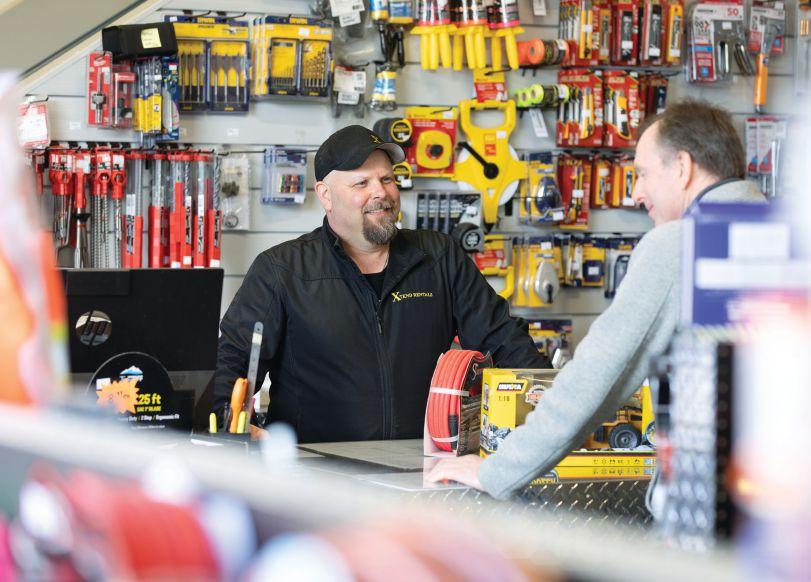
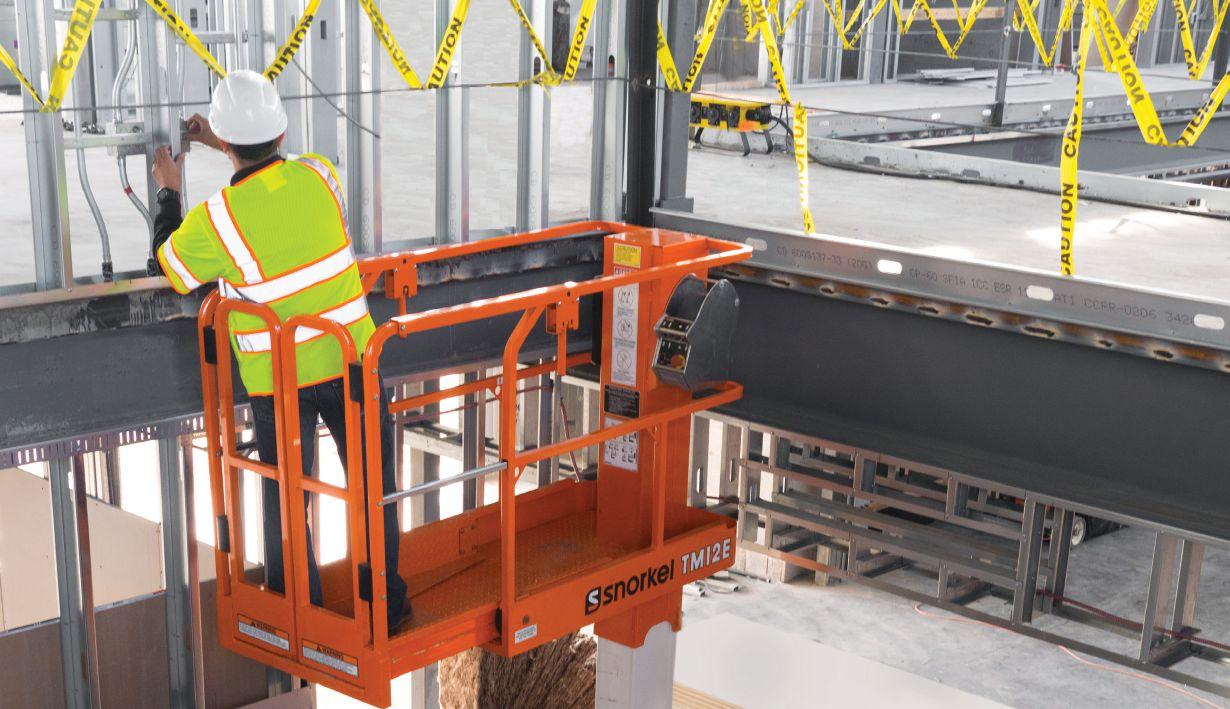






Bonnie eventually suggested selling the machine, Bill decided to rent it out instead.
Within 10 minutes it was on Craigslist for rent and within an hour the first booking came in.
“After that afternoon I rented it out almost non-stop for the next 30 days,” he says. And the phone just kept ringing.
Once we had our third excavator being rented out of our yard at home, I said, ‘I can’t slow down now. This is cool, this is too much fun.’
out of our yard at home, I said, ‘I can’t slow down now. This is cool, this is too much fun’,” he recalls. “Before long, I had seven excavators in my yard, four skid steers and a truck full of rental tools. We just kept on going. We bought a oneacre lot on the Trans-Canada Highway and filled it up pretty darn fast. Then we built a gravel and mulch sales yard there as well. The whole outside of the lot is lined with equipment and two sides are filled with gravel, mulch and soil bins.”
When Bill started up the rental business off of his front lawn, his wife didn’t want anything to do with the new company. But since then, it’s grown on her.
“She hated it when her yard at home had machines coming in and out constantly,” he says. “Now she helps manage both of our locations. She’s all-in now.”
Bill decided to name the company Xtend Rentals and Safety shortly after renting out his first piece of equipment.
Seeing a need for rental equipment in his community, Bill decided to purchase a few more machines to rent to local contractors and homeowners.
“Once we had our third excavator being rented
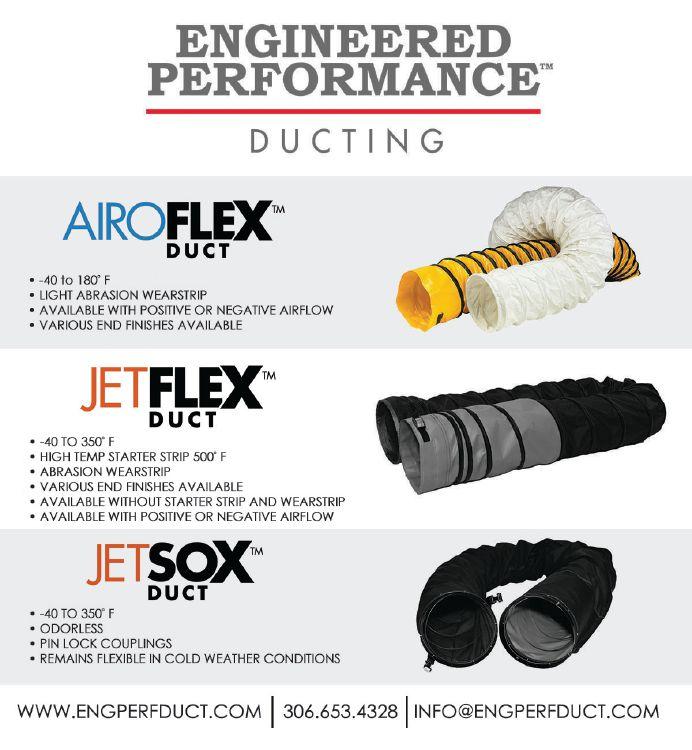
“That night I was joking to my wife about starting up a rental company. After I rented out the first machine and was shopping for another one, I said, ‘We need to think of a catchy name,’” he recalls. “I was planning on renting excavators, skid steers and track loaders – keep it simple. All of the booms extend, so I said, ‘Let’s call it Xtend Rentals.’ She had my first Xtend hat made for me a week or so later, which I thought was cool since she didn’t really like that I was on a second business venture.”
Bill’s goal was to become a household name in the central region of Vancouver Island over the next five years. He’s certainly on his way towards accomplishing that goal.
“We currently have over 4,000 rental and safety gear items available; over 60 pieces of tracked or rubber tire machinery we rent as well as seven delivery trucks,” he says. “We’ve grown from just me to 11 full-time employees and seven part-time employees in the past three years.”
Xtend Rentals and Safety opened up its second branch two months ago in Nanaimo and Bill has plans to bring on additional full-time staff in the coming months. He is also considering opening up a third location.
The “Safety” portion of Xtend Rentals and Safety stemmed from Bill identifying another need in the contractor
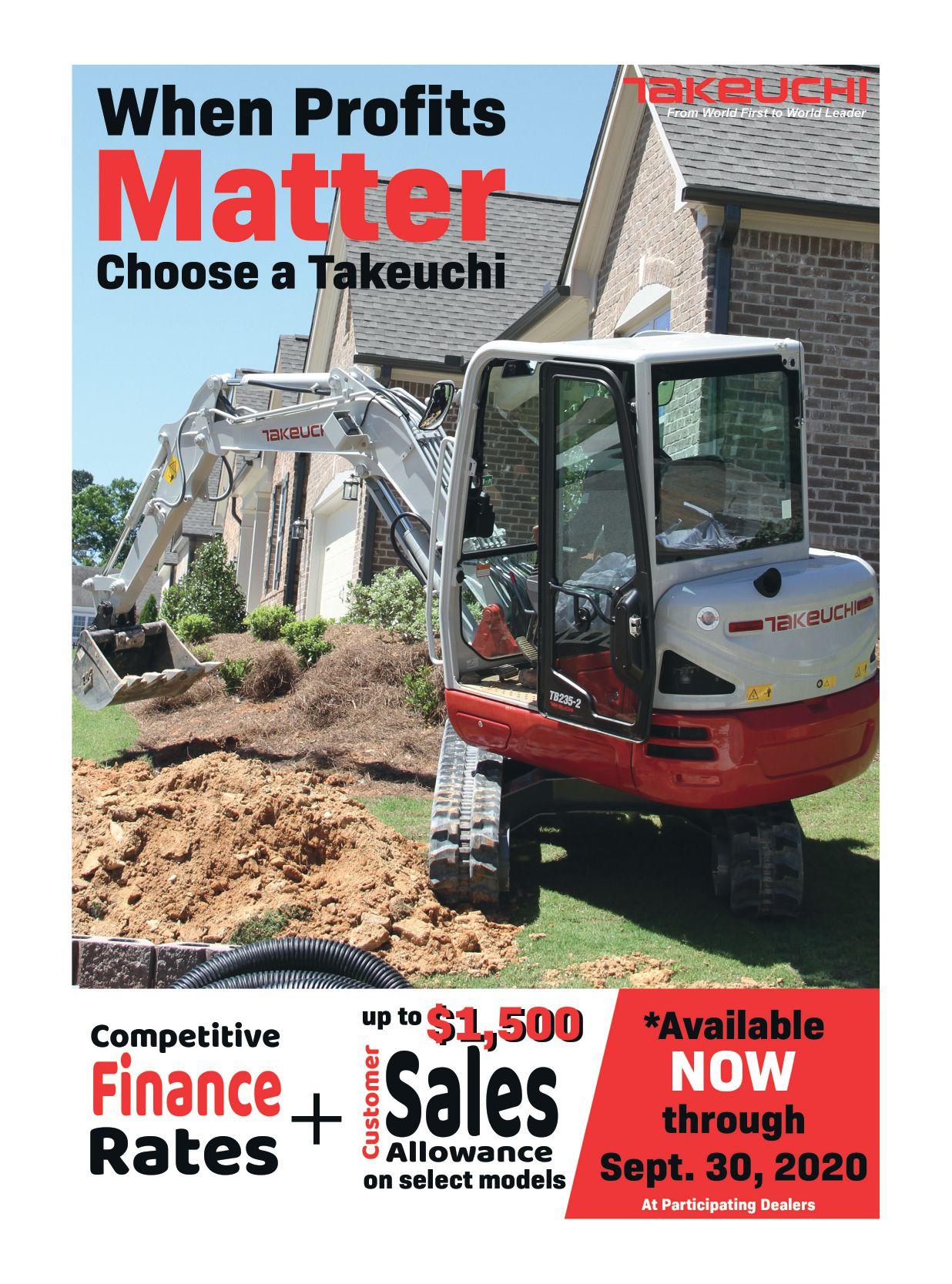


marketplace.
“That’s the one thing that was somewhat lacking in the Greater Nanaimo area. Only a few stores stock that kind of product,” he says.
“We slowed down with rentals during our first winter, so we thought about adding another revenue stream that would be year-round. It took me about five minutes to think of safety gear.”
The safety product side of the business grew fairly quickly in popularity, and now the company offers a wide variety of branded safety products.
“Our safety gear sales might even surpass our rental sales one day,” he says.
Bill’s passion for the plumbing and heating sector isn’t what it once was. He still runs his Maple Ridge-based business overseeing 12 employees with the help of his nephew, who works as a technician and oversees the company’s day-to-day operations. That said, Bill’s love for all things mechanical is still in
him, and has been in his blood since he was a small boy.
“I was born on a large farm in the Lower Mainland,” he says. “Thanks to my dad, who passed 13 years ago, I’ve had huge exposure to equipment since I was six years old. I actually started operating equipment when I was six years old regularly. My dad stuck me in the seat of a Massey Ferguson 135 Tractor in the middle of a field and asked me to pull the disc around until there were no rough spots left.”
Bill recalls his mom being a little upset at his dad for leaving him out there in the field below their home where they couldn’t even see him. A few hours later, they heard the tractor shut off. Turned out that Bill got stuck in a muddy area and stalled the tractor.
“Since that day back in 1977, I’ve been addicted to everything that’s mechanical. I’m a car nut. I’ve had 53 motorcycles ATCs and quads. I have an 850-horsepower Camaro and a 650-horsepower Buick Grand National. That’s my real passion. Anything that moves or is mechanical or a tool, I’m totally addicted to,” he says.
Bill often asks himself, “‘How have I been so fortunate that this is now what I do for a living?’ I have a candy store for construction and contractors.”
Bill’s vast experience with operating equipment and tools gives him a wealth of knowledge that he is happy to share with his customers. He’s had a total of 32 years of experience in the farming and construction sector – an especially impressive number given that he’s only 48 years of age. When asked if he has any favourite tools or equipment, there are a few that are at the top of his mind.
“I’ve spent many years on the end of a coring machine and we now rent a fleet of them,” Bill says. “Deere, Hilti and Husqvarna are my favourite brands and always have been. Most rental guys don’t get to spend 30 years of their lives actually running equipment and using tools before renting them. I’ve been very fortunate in that respect.”
When it comes to Bill’s favourite aspects of operating his rental equipment business, playing with tools and operating equipment actually sits second on his list. Number one is his day-to-day interactions with his customers, helping them solve problems.
“I love dealing with people and problem-solving issues,” he says. “I love my clients and they will tell you that relationships are really important to me. Tools and equipment have always been secondary to that.”
The only real challenge the company experiences when it comes to people is finding the right staff to fit the company’s rapid growth.
“We pride ourselves on having really happy staff, a very positive environment and making sure they’re well trained,” Bill says.
Bill recently started up a YouTube channel – Tracks, Treads and Tools – to show people how to operate a variety of equipment and showcase some of his latest tools. He plans to build on that in 2020.
“You’ll see a lot about our tools and a little about myself as well,” he says.
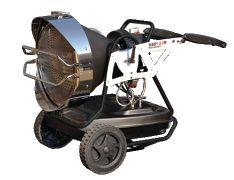











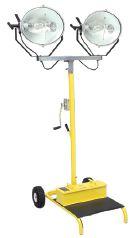

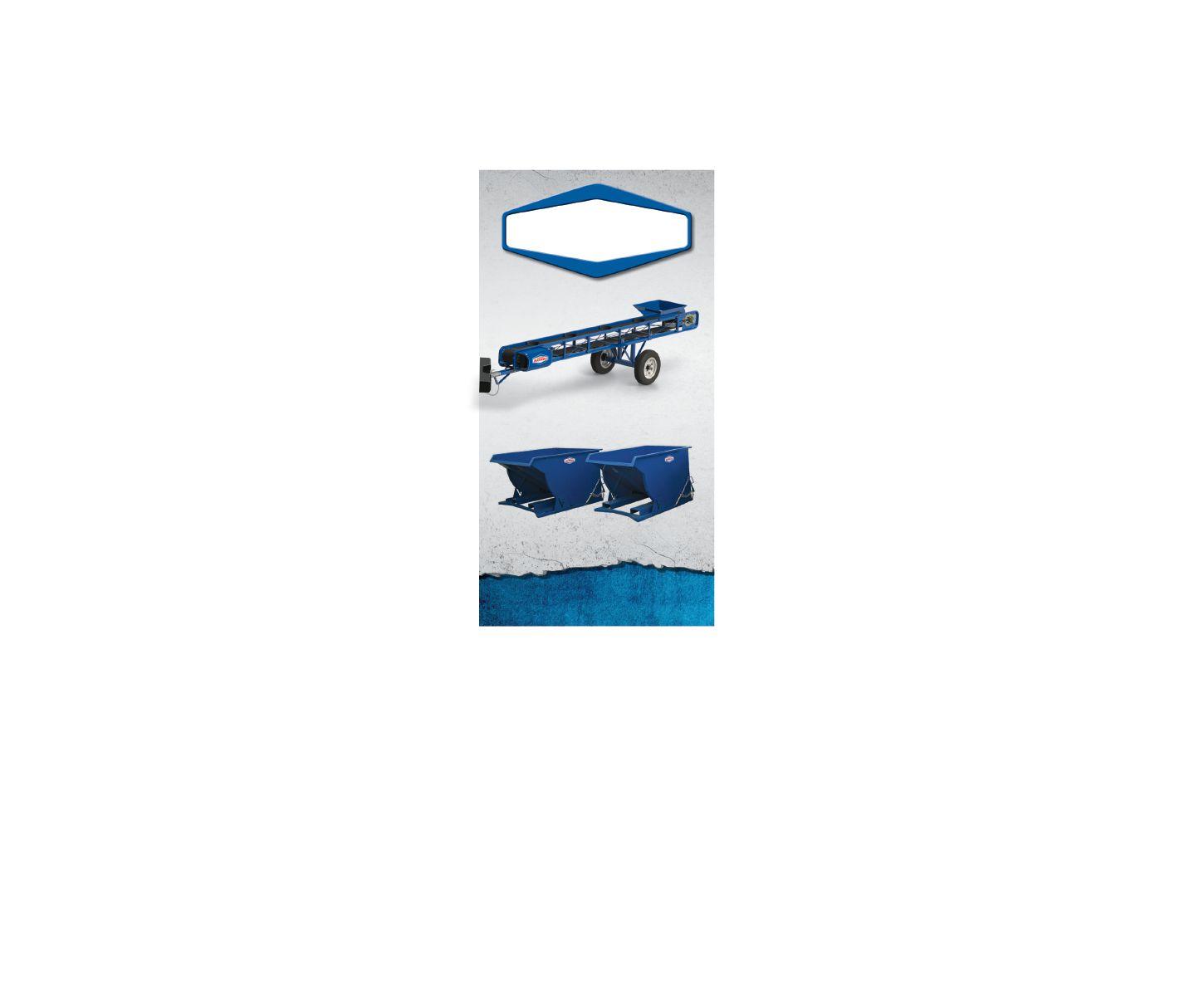

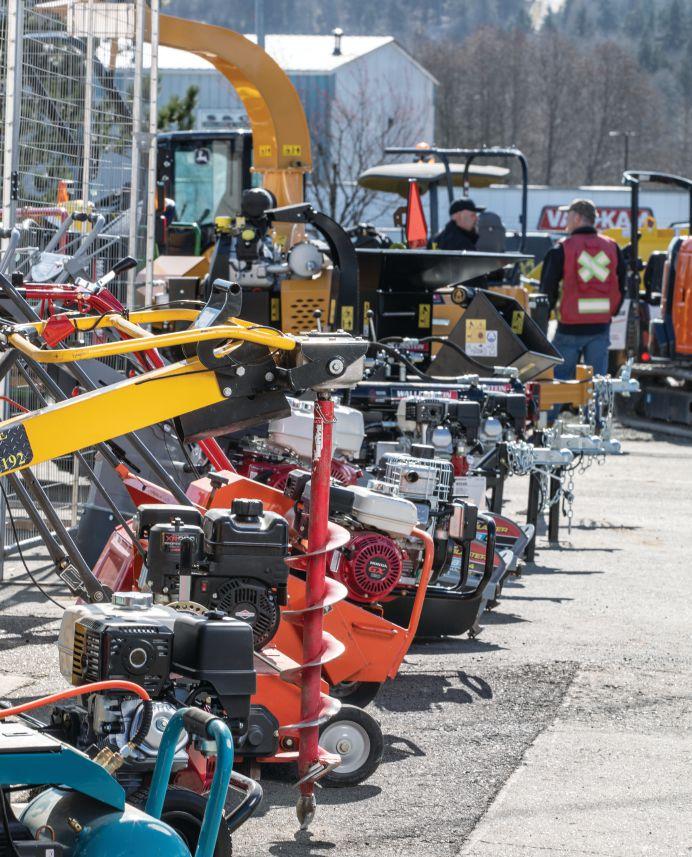
Xtend Rentals and Safety currently offers over 4,000 rental and safety gear items and rents out over 60 pieces of tracked or rubber tire machinery as well.

“We’re going to do a full tool preview page, and a truck review featuring reviews of our tow setups.”
The company also has an Instagram account that showcases equipment and tools for rent at his locations.
This isn’t the first time Bill dived into online promotion for his passions. Back in 2000, he ran a website for car enthusiasts called MonsterSpeedfreak. com. At its peak, Bill says it had approximately two million subscribers, which was a lot back then.
“It was one of the biggest automotiverelated websites on the internet in 2000,” he says. “It featured writeups on people’s custom car, truck, boat and motorcycle builds, and what they did to build them. We were getting up to 100,000 unique
visits per day.” That experience has helped a lot while growing Xtend.
In addition to another potential rental store in Southern Vancouver Island, Bill says he’d like to have a few more locations over the next five years. But he and his wife would also like to spend some time travelling, maybe do some car racing and spend more time with their son. So, he’s not sure he’ll expand that aggressively. Only time will tell.
“I now spend most of my days delivering equipment all over the island, which is my favourite part of this business. It’s crazy how well this fits my lifestyle, it never feels like work,” Bill says. It’s surreal, It’s super surreal.” CRS

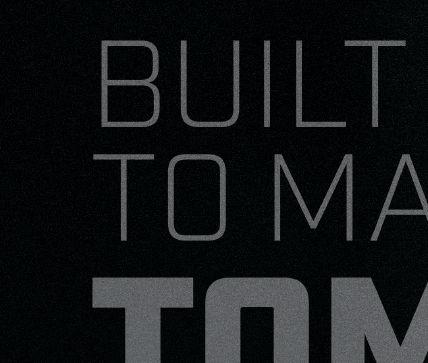
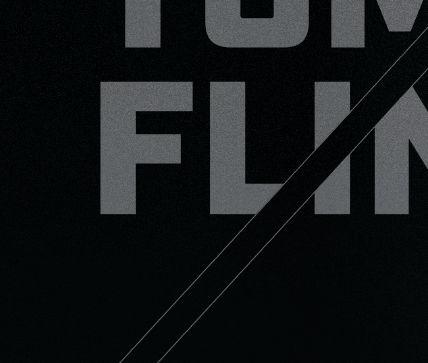







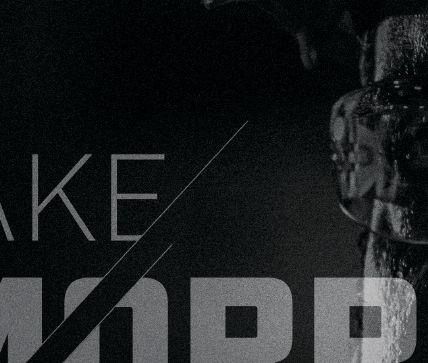
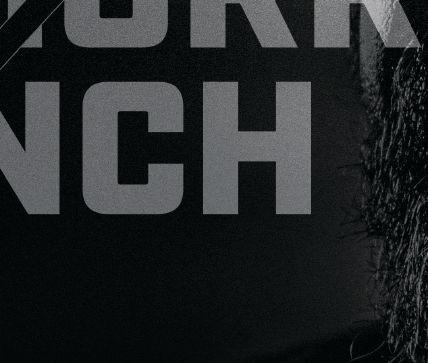
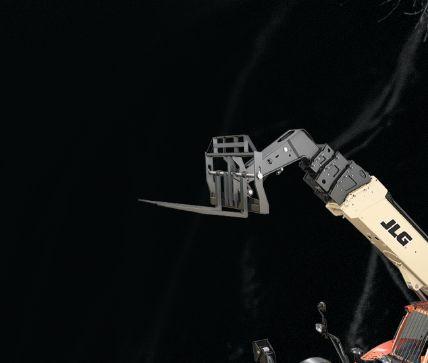

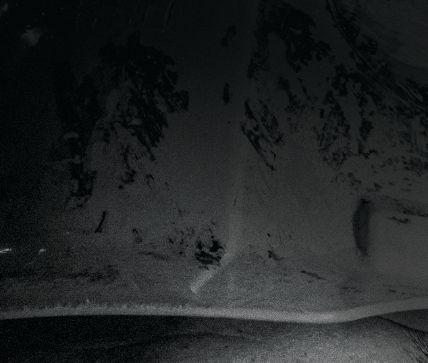
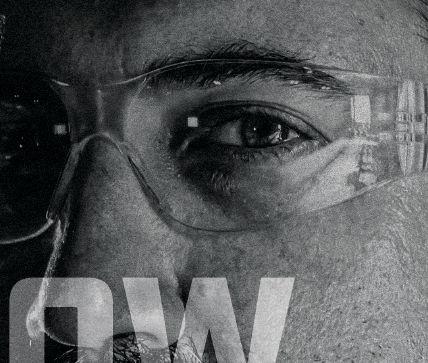
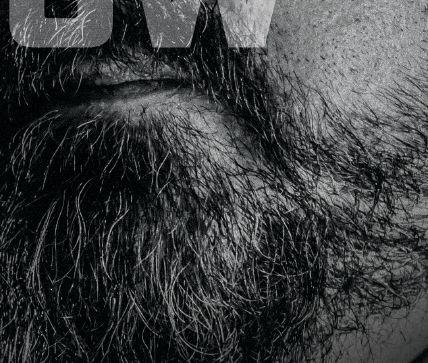
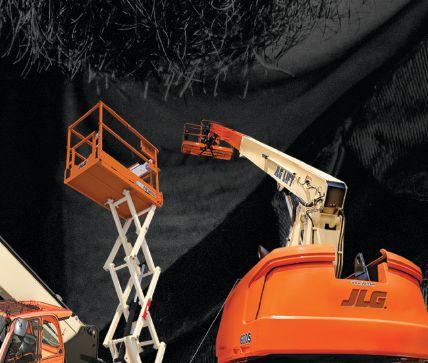
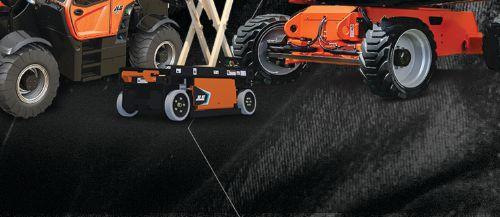
Without industry standards, it’s up to rental stores to know what to look for.
Rubber tracks can be a great alternative to steel tracks in some applications. They are less damaging to concrete, asphalt and vegetation. They also provide quieter operation and a smoother ride.
by Michael Knight, president of Woodbridge Equipment
Eventually, even the best rubber tracks fail, and you will need to replace them.
Woodbridge Equipment Parts is a Canadianowned independent dealer that has been helping rental companies with their rubber track needs since 2005. With warehouses in provinces from Newfoundland and Labrador to Manitoba, the company has a huge stock of rubber tracks available.
Think of the applications in which the tracks will be used. When you rent out equipment to customers, the applications can be diverse. You may want to choose a track that operates well in most applications versus one that operates very well in one or two applications but terribly in others.
Once you have decided in which applications the machine will likely operate, you need to choose a tread pattern that works best in those
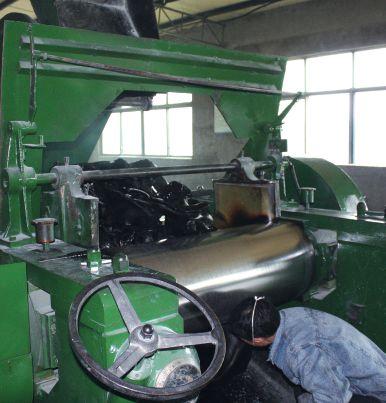
applications. There are four popular tread patterns. The C-Lug tread is easily recognizable since the notches on the tracks look like the letter C. It offers a smooth ride and works well both on the road and off the road. The cutting edges increase traction and offer high performance. Designed for rocky and gravelly terrains as well as other abrasive surfaces, staggered tread tracks offer a comfortable ride on hard surfaces and minimal ground disturbance.
The straight-bar tread is an aggressive track that is ideal for muddy, wet terrain, but is not well-suited for hard surfaces. When loading a machine equipped with aggressive treads, the treads can even make the machine’s climb into the trailer more difficult.
The multi-bar tread has a greater number of tread lugs per foot, which provides a smoother ride and excellent traction. It works great on

loose ground and hard surfaces. Some tracks are available in a non-marking version. This means that the black from the rubber track is much less likely to mark surfaces. Many are available in standard and wide configurations.
Once you have chosen the type of rubber tracks you need, you have to choose a manufacturer.
When rental companies or contractors need to purchase a new set of tracks, they often put out a request for quotes to three or four suppliers. The one that has the tracks in stock and has the lowest price generally gets the sale.
Sellers of rubber tracks generally make one of two claims – “we have the best tracks” or “we have the cheapest tracks” – and only one of these claims can be verified. You can look at the price and have an objective comparison between multiple products; there is no way to determine who has the best tracks. Therefore, the decision-making surrounding the purchase of rubber tracks is skewed toward purchasing a cheap set of tracks, because the price is the only quantity that can be easily known. Many companies operate this way even though they inevitably end up paying more for tracks because the cheaper tracks do not last as long and the cost of ownership eventually increases.
Manufacturers of rubber tracks make a lot of claims about their tracks, but there isn’t a lot of truth to many claims; it’s just spin. They are trying to position their tracks as being more effective or durable in the field than they actually are. No rubber track manufacturer is capable of easily offering their potential customers objective information that demonstrates the superiority of their product.
Comparing rubber tracks is not like comparing rubber tires. All tires are marked with numbers and letters that indicate the tire’s maximum speed, maximum load capacity and composition, among other things. There are numerous categories listed for each rubber tire regardless of manufacturer and this can be used to objectively compare the quality of the tires from different manu-
facturers.
However, there is no industry standard for rubber tracks. Since the rubber tire industry is a significantly larger and more mature industry than the rubber track industry, they have had more time to create industry standards. Plus, rubber tires have been used extensively in general consumer and heavy haul applications for a long time. Therefore, governments have been motivated to help rubber tire manufacturers develop industry standards so that people can know the performance, durability and composition values of tires.
Without an industry standard that allows for objective comparison of rubber tracks, manufacturers of premium and higher-end rubber tracks have no means of proving that their products are superior. In the absence of an industry standard, they must get into long conversations with potential customers about the materials and the manufacturing process of their tracks, because this will help differentiate their product from their competitors’ products.
A rubber track is composed of three elements: a steel metal core, steel cablings and the rubber track.
The metal core is a forged product. Anyone who has shopped for forged products knows that there is a lot of variation in price and quality. Low- and highcost steel options are also available. This is why it is important to check the weight of rubber tracks. When comparing tracks of the same size, if the weights are different, you know that the one that weighs the least either has a lower-density core, lower-density cabling, less cabling, or lower-density rubber. Tracks equipped with lower-density materials will not withstand the stresses put on them as well as tracks composed of higher-density materials.
How are the steel cablings incorporated during the manufacturing process of rubber tracks? Some tracks are equipped with an overlapping steel belt and some are equipped with a continuous steel cord. A continuous steel cord wraps around the inside of the rubber track with no breaks. It is like taking a string
and wrapping it around your hands many times – very difficult to break. An overlapping steel belt is like a bracelet. The steel gets cut and vulcanized to form the bracelet, and this creates a weak spot.
When it comes to quality rubber, you want tracks that are composed primarily of natural rubber and carbon black. Carbon black is what gives the rubber its colour and protects it from ultraviolet light. In order to promote the quality of their products, some manufacturers might advertise that their product is ISO certified. However, this certification has no bearing on the quality of the end product, just the quality of the manufacturing process. It means that the company manufactures the same product consistently – that each product manufactured meets the specifications with little deviation. So, if you manufacture an inferior product and are ISO certified, it means you consistently manufacture an inferior product.
There is a difference in the mentality of parts people and other members of the industry towards rubber tracks. Too often, they treat rubber tracks like it’s a commodity instead of a product. A commodity is a raw material. Purchasing rocks for a sub-base is a perfect example. It doesn’t matter where you get the rocks – the rocks are all the same. A product, on the other hand, is a substance that is manufactured or refined for sale. This describes rubber tracks, which have various performance qualities depending on the manufacturer.
If you treat rubber tracks like a commodity, you will forever be purchasing the lowest-cost rubber track available. You might suffer performance issues in the field and decreased downtime because you will need to replace the rubber tracks more often.
It’s best to deal with a rubber tracks supplier who has a strong relationship with the manufacturer. They really know their products and the market. At Woodbridge Equipment Parts, we have had a strong relationship with our supplier dating back to when we entered the rubber track market in 2005. CRS
by Neil Doherty, chief engineer of EMEA digital products at JLG Industries
Building Information Modeling is an intelligent 3D model-based process that gives architecture and construction professionals the insight and tools they need to plan, design, construct and manage building and infrastructure projects more efficiently. BIM is transforming the traditionally siloed architecture, engineering and construction disciplines, allowing better collaboration and enhanced communication from the earliest stages of a project through completion. Integrating equipment access into BIM modelling at this early stage can offer significant benefits to all concerned.

BIM has fundamentally changed the way construction projects are approached. Historically, the building design process was very linear with little control over how information was being passed back and forth between the client, design engineers, architects and contractors. Information was generally provided in the form of a two-dimensional print describing a highly complex, three-dimensional job site. This print was often misinterpreted during the planning stage and design changes frequently got lost, resulting in costly rework and time inefficiencies during construction.
BIM models of all types are now available to help better align project stakeholders in the early stages of a project and to provide a single go-to source of information. These BIM models allow companies to more effectively visualize, plan, then simulate a construction project with three-dimensional detail. These simulations can then be reviewed by all those who will help execute the actual construction before the job begins, allowing for identification of potential challenges and healthy input around how to best optimize the process once onsite. This more robust upfront planning minimizes potential challenges while onsite to keep projects on time and reduce or eliminate unexpected costs.
Architectural design and engineering are at the core of every new construction project. Once that work is complete, the bid process can begin. For bids to be accurate, logistics planning

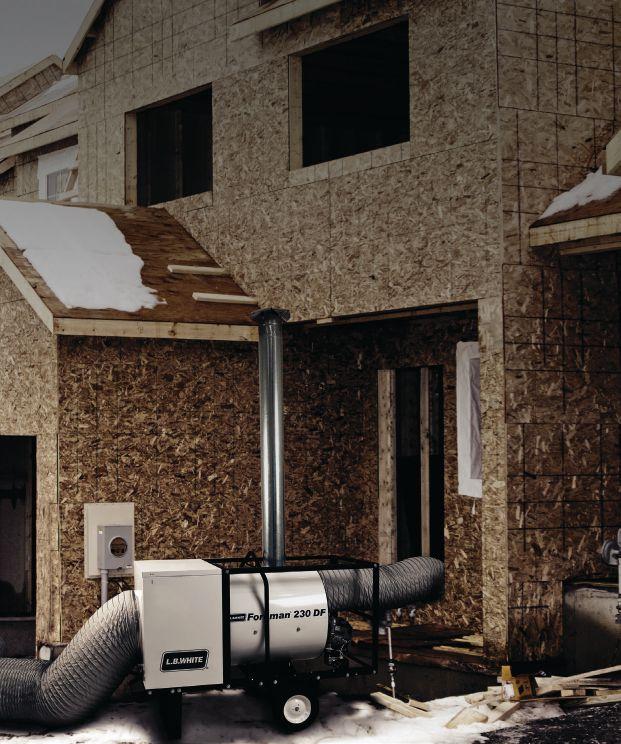

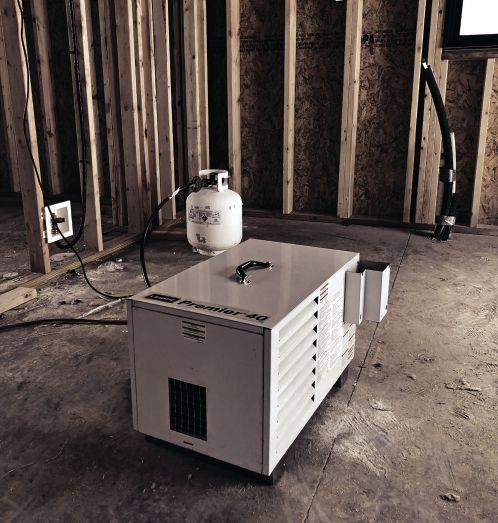

40,000 BTU/hr LP heater with safe, enclosed flame
Runs 6-8 hours on a 20 lb tank in some applications
Operate multiple heaters from single 120-volt power supply
Moves easy from site-to-site at less than 55 lbs
Option to run from remote thermostat or duct up to 12 feet

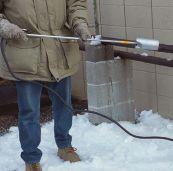
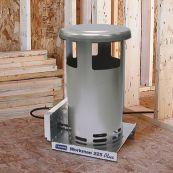
Highest heat output at 230,000 BTU/hr and most reliable airflow in the class
Design flexes to fit countless applications without sacrificing performance
Ideal for jobs that require clean, dry heat
Available in Oil and Dual Fuel (LP/NG) models

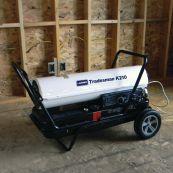
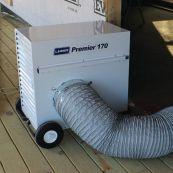
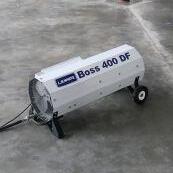
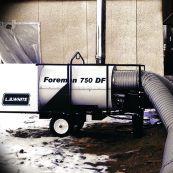

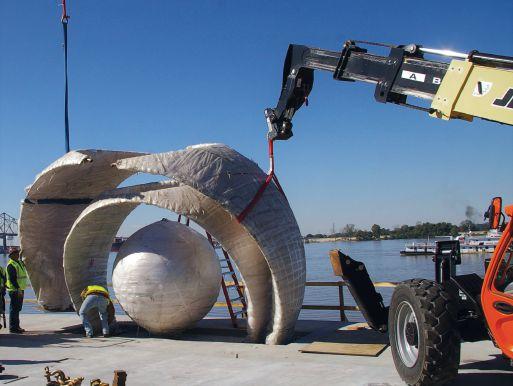
in terms of materials and equipment must be considered.
To facilitate better equipment planning on large construction projects, many equipment manufacturers now offer select BIM models, with some, like JLG, offering BIM models for the full equipment line. JLG hosts and maintains its BIM model library on JLG.com, which allows for live updates to machine specs as changes are made. So users will always know they have the most up-to-date information. Additionally, the models are hosted on bimobject.com, targeting a broader group of users leveraging this technology.



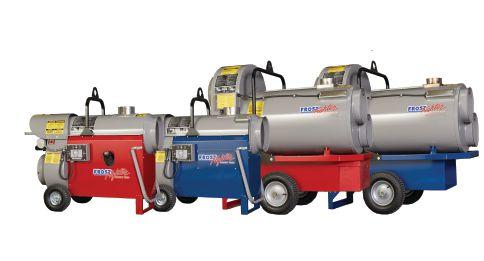

The BIM model was used to select the JLG 1255 telehandler as the ideal equipment for the construction and installation process of the 14-foot-tall spherical sculpture erected on the Mississippi riverfront.
Contractors bidding on work can download these data-rich BIM equipment models and place them in simulated job site environments to ensure they choose the right machine(s) for the work and the space in which they will be used. They can even “load” them onto trucks and virtually deliver the units to the job site to determine the most efficient path to where the unit will be used.
Pre-planning during the bid process using BIM equipment models helps users more accurately plan for the equipment they need. For rental companies, a major advantage of BIM is they can get involved in the project in the early design and planning stages, increasing customer confidence in machine availability and building early relationships with the general contractor and sub-contractors. This provides peace of mind for the contractor through having a complete view of what is needed and when. Early engagement enables machines to be at the ready, with delivery planned to yield the greatest utilization.
To honour its 100-year anniversary in 2018, the Rotary Club of Baton Rouge, La., donated a 14-foot-tall spherical sculpture to be installed on the Mississippi riverfront. The Rotary Club tapped the JLG BIM library from the initial planning stages of the project, choosing the JLG 1255 telehandler model. By using the 3D BIM model of the 1255, they were able to determine it could be used from the start of construction through final installation of the sculpture.
Since the structure was being built and installed on the Mississippi riverfront, it presented its fair share of challenges –not the least of which was extremely limited space requirements on the levee. “One wrong little step and you would’ve been hearing about this on the news,” said Mark Kenney, rigging engineer on the project.

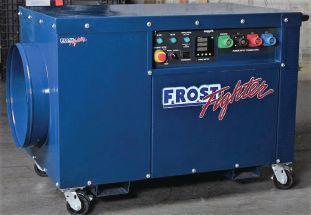
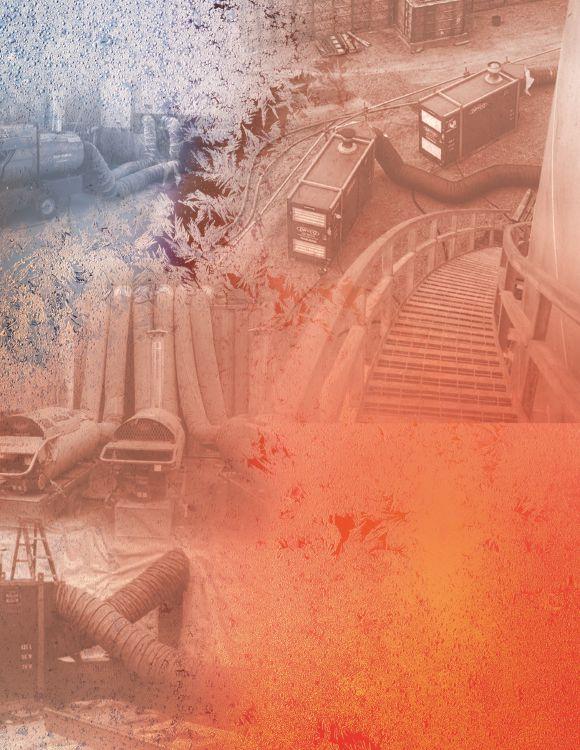
By using a BIM model, Kenney and his team were able to identify the JLG 1255 telehandler as the right unit with a high degree of confidence. The 3D BIM model’s precise specifications allowed them to visualize its exact placement on the levee and share that information with the Rotary Club and the sculpture’s artist for planning purposes.
“Using BIM allowed us to visualize its placement, which was much easier than looking at a specifications sheet,” Kenney said. “Since it was a 3D model, we were able to show the customer how we planned to complete the job. It worked out really well.”
Using the JLG 1255 telehandler, the crew unloaded each of the sculpture’s three primary pieces with the carriage and forks. However, the outer shell of the sculpture was too large to ship as one piece. Split down the middle in two halves, the outer piece needed to be connected, then installed, while being held aloft so as not to scar the reflective, stainless-steel surface. Fortunately, thanks to effective planning with the BIM model and prior communication with JLG, the team knew they had exactly the right
equipment to get the job done.
“The telehandler lifting hook attachment turned out to be the best accessory to use due to space restrictions and flexibility,” said David Bondurant, manager of the rigging department on the project. In coordination with a 165-ton-capacity crane, the JLG 1255 telehandler’s lifting hook attachment helped manipulate each piece into position.
The success of this project was largely attributed to the use of BIM. By placing BIM models into the actual plans, the contractor was able to confidently specify the equipment and accessory selection that would get the job done on time and within budget.
Architects and engineers develop amazing designs that continue to modernize building and infrastructure projects around the world every day. BIM facilitates planning not only for the construction phase, but for the post-construction maintenance phase. By using equipment models early in the design phase we have seen some architects include access and areas for machine storage to keep building maintenance costs down by eliminating the need to prepare the site when machines are used. For one project, concrete loads were increased in select areas of the facility to allow the use of JLG 1850 Ultra Boom lifts for long-term maintenance.
BIM is enabling much deeper planning and understanding of projects. It has so many uses already, with more being uncovered almost daily. JLG is proud to be a leader in this space. The company sees offering BIM models to its customers as a valuable tool that will drive greater efficiencies throughout the construction process. JLG offers three levels of BIM models today, from free to a subscription-based service to companies who desire a branded library of BIM models to its customer base.
JLG continues to grow its connected solutions offering. Its line of access equipment gets the company onto many jobs. However, understanding the need for advanced equipment solutions through digital tools like BIM helps the company provide added value to its customers. CRS
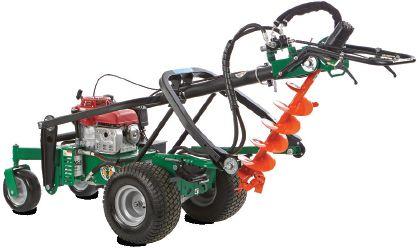
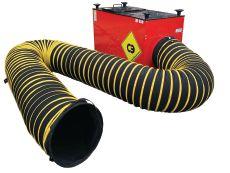
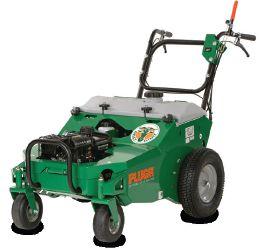





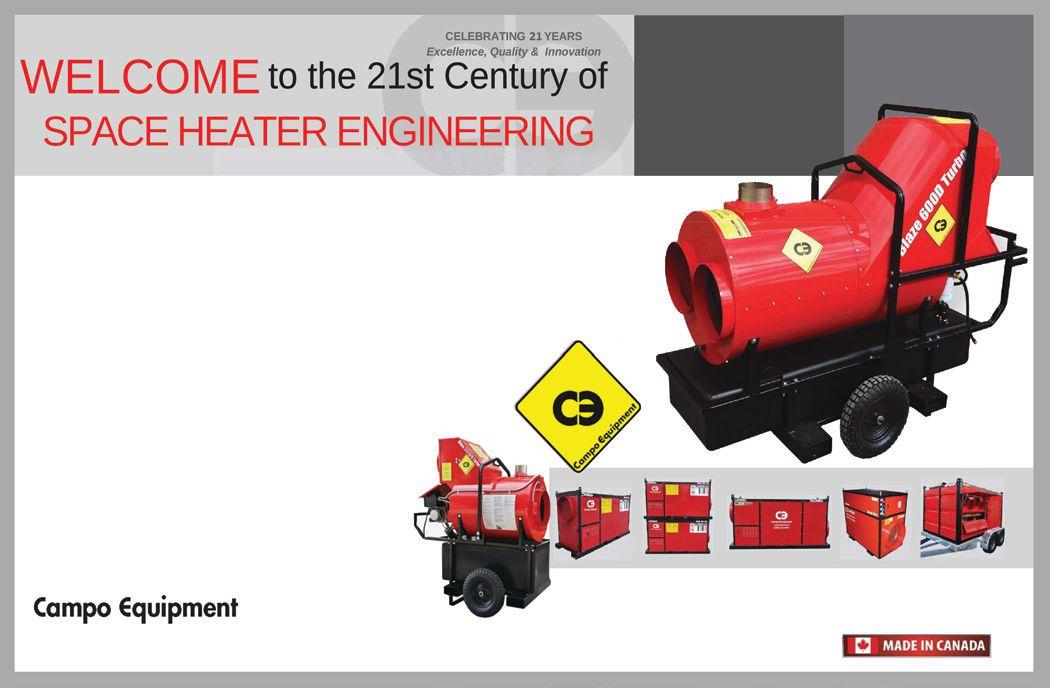



Turn the heat on for customers with the latest heating solutions from Canada’s top suppliers.
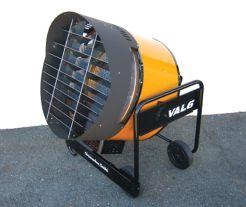
8 ces-sales.com
CES carries a complete line of heating products for all heating applications and fuel choices, including propane, natural gas, electric and oil fired units. As well, it supplies units that are direct-fired, indirect-fired and infrared as well as convection. The Val 6 heater offered by CES is designed to be dependable. Its radiant heat is capable of heating an object without affecting the air and loosing efficiency at the same time. Wind or cold ambient temperatures do not affect Val 6 heaters the same way they do on forced air heaters. The product is not only ecofriendly, releasing only one to two parts per million of carbon monoxide, but is also able to convert almost 100 percent of its fuel to energy. This makes Val 6 quite an efficient heater. CES also offers the full line of Marley Engineered heating products as well as the TBX series mobile warmer. The
TBX mobile warmers, available in two sizes, have a thermostat with a positive off and fan-only positions with a range from 40 to 100 F. Ten-inch wheels allow for easy rolling over obstacles on a job site to the spot where heat is required.

8 heatstarbyenerco.com
HeatStar is expanding its oil-fired, portable radiant heater offering with the HSP150R model. HeatStar portable radiant heaters are heavy-duty, compact, light, safe and quiet with long run times. Major components are easily accessible for ease of maintenance. The HSP150R is similar in size to the HSP125R. Both units feature lift brackets, two-stage heat settings, solid wheels, adjustable handles and a directional heat disc for added user control. HSP150R runs at 150,000 BTU on high and 102,000 on the low-fuel saving setting. This heater is currently stocked in Mississauga, Ont., for short,
convenient shipping lead times.
8 ntiglobal.com
NTI Global has been in business for over 35 years and manufactures high-quality flexible duct and lay-flat tubing. To address the need for easier storage, its ducting product lines – HiTex and Versa Ducting – are now being shipped in free storage crates. With these crates, rental shops can now store the ducts by size and stay organized, making inventory counts a breeze. With no cardboard packaging, the crates minimize waste. The shop is safer with no loose duct stored on a pallet. Business owners can free up warehouse space by doublestacking the crates. Thousands
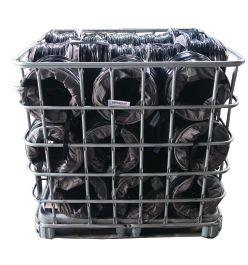
of NTI Global items are currently in stock and ready to be shipped.
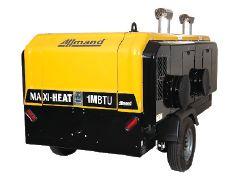
8 allmand.com
The new Allmand MaxiHeat mobile diesel heater features two independently operating burners which deliver one million BTUs of self-contained, indirect-fired heat. These units are robustly designed, performing even in the harshest conditions. For ease of operation, the Maxi-Heat comes fully equipped with the iQ system, which automatically calibrates each burner. This provides reliable troublefree operation, eliminating tedious trial and error combustion measurements and adjustments. Recirculation is standard on all MaxiHeat products resulting in increased efficiency and less fuel consumption. The MaxiHeat can go from warming equipment to curing concrete. Applications include concrete curing, site warming, warming other jobsite equipment and disaster-relief drying and heating. Maxi-Heat is designed for less fuel consumption
and increased efficiency; it returns heated air back to the burner intake. It provides more than 130 percent fluid containment for all on-board fluids. The new Maxi-Heat’s iQ touch screen controller is an external screen that eliminates the need to open the heater to operate. Both heaters can be controlled on a single scree. It also provides the proper damper setting for the most efficient air and fuel mixture based on the job site’s ambient temperature and barometric pressure. It displays efficiency, target and actual outlet temperature, which is an improved updated feature from Allmand’s previous unit.

8 campoequipment.com
Campo Equipment has introduced its new directfired heater, complementing its electric and indirect fired heater line up. The DF-650 from Campo Equipment is a direct-fired, 650,000-BTU heater that delivers 5,500 CFM with four inches of static pressure. With a standard quick-change valve, the DF-650 runs on natural gas or propane. Ductable to 100 feet, the DF650 does not require expensive rigid metal ducting like other heaters.
Standard high-temperature ducting, which rental stores already have in stock, is sufficient. Additionally, standard ducting provides for more versatility in directional heating. Its “push through” fan protects critical components
from overheating, thereby eliminating the threat of premature jobsite failure of the heater’s cooling fan. The DF-650 is very quiet by comparison and is job siteflexible. It only draws 12.7 amperes on a 110-volt circuit. The DF650’s slim design and oversized swivel and lockable casters make it convenient for one person to position. The heater fits through a 31-inch opening. Fork pockets and a single lift point are standard for increased safety while loading and unloading. The DF650 is stackable for convenient off-season storage. With Campo’s wide scope modulation from 50,000 to 650,000 BTU, which provides application versatility, the user will experience reduced cycle loss, reduced wear and tear on critical components and greater thermal efficiencies. In the event the unit becomes starved for fuel, the DF-650 will shut down and cold outside air will not be forced into the workspace.
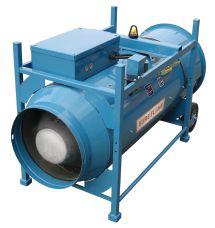
8 sureflame.ca
Sure Flame’s latest product, the SE410, is a new kind of heater. It is a 400,000-BTU direct enclosed-flame heater that is safely ductable up to 75 feet. How do you safely duct a direct-fired heater? The answer is technology. The SE410 features advanced electronics with a sophisticated oxygen sensor that continually monitors combustion and makes automatic adjustments if needed. Innovative real-
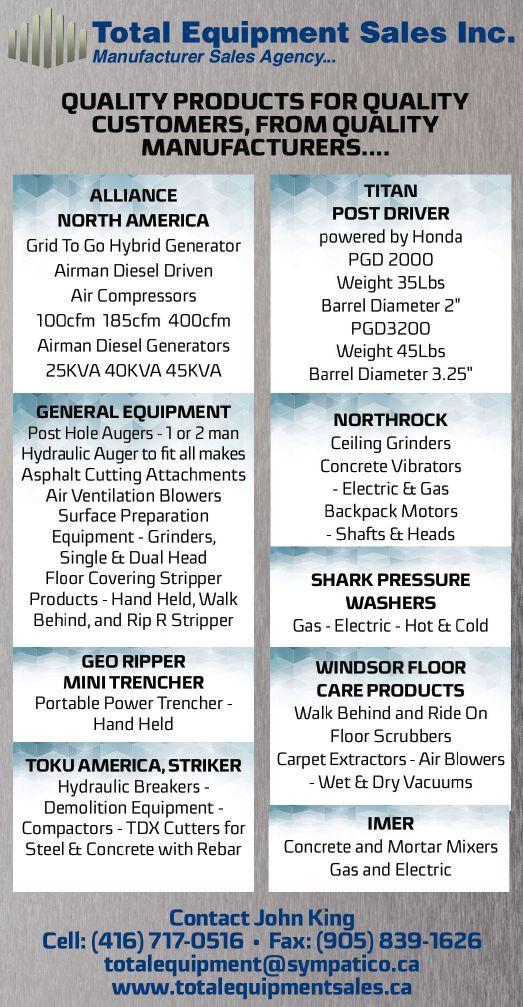
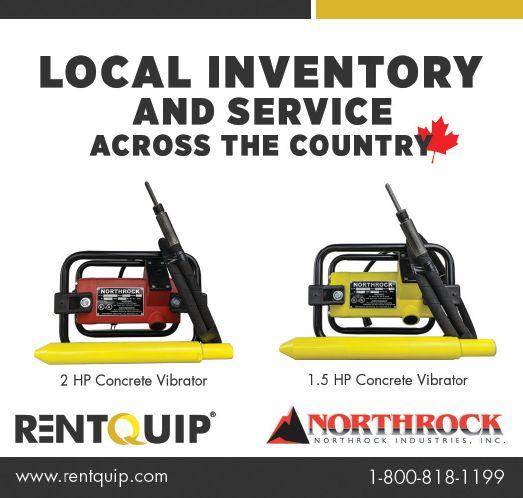

Reversible Plate Weight : 948 lbs.
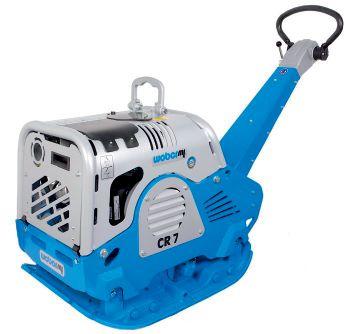
GET AGGRESSIVE with the 37SG all-hydraulic stump grinder from Barreto powered by a 37hp EFI Briggs & Stratton Vanguard V-Twin engine The 1,670 lb. frame, time tested Barreto track platform and center-mounted hydraulic cutting head give your customers unmatched productivity.



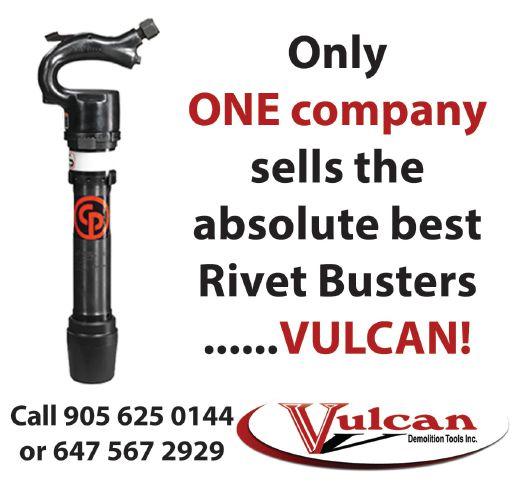
time diagnostic tools are available and easily accessed through the on-board LCD screen, which is certified for extreme cold weather operation. Tailor-made for the rugged demands of the rental industry, the SE410 is easy to move, stackable and extremely serviceable. Sure Flame also offers its three-year warranty on the product.
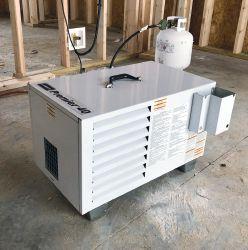
8 lbwhite.com
The new Premier 40 from L.B. White is one of the smallest box-style heaters available on the market with a 40,000 BTU-per-hour output. It offers a safe, enclosed flame and ductability like larger models in the class, with the convenience of running from a 20-pound propane tank for six to eight hours in many tent applications. At less than 55 pounds and including an easy-grip handle, the Premier 40 is very portable. The L.B. White heat estimator app can be used to quickly calculate if the Premier 40 is the right size for the event space and desired temperature rise.
AM
8 ecopowerequip.com
Eco Power Equipment is introducing the IAQH 1800, an indirect-fired heating solution designed for performance at scale. The IAQH 1800 provides centralized, large scale heating capacity. Designed for large-
scale construction with larger cubic volumes, it is ideal for hospitals, highrises, big-box stores, distribution centres, wood frame multi-family low rises, and other applications. The IAQH 1800 is capable of heating large spaces and creating a temporary environment that controls temperature and humidity reduction via heated makeup air. The ability to utilize a single or reduced number of larger heaters to heat entire spaces reduces the total cost of projects, making for a leaner construction environment based on reducing fuel burn, ideal construction temperature and humidity. Its modulating design ensures required horsepower for high output heating but can modulate down to 150,000 BTU. The product has limited burner cycling, and its control system offers uptime even in minus-40 C conditions. The product is engineered to provide constant circulation for the structure and uses several automatic make-up air strategies, depending on the location and ambient conditions. It is capable of controlling temperature and humidity better, while

providing even distribution through space. The product comes with high-performance automation with an integrated modem with one-year service from the factory. Features include a remote control and monitoring, notifications, and heating management. The four-pass heat exchanger comprises a primary drum
and secondary tubes made of 304 stainless steel designed to reduce cracking of welded joints. In addition, 300-series stainless steel is known for its great resistance to corrosion and can safely operate at high temperatures, which increases its service life. The exchanger is equipped with access panels for the inspection and cleaning of the secondary tubes. It is installed so as to enable the thermal expansion that occurs during heating. All doors on the IAQH 1800 are lockable for theft and vandalism protection. It features an engineered vibration damping system, a whisper-quiet design with an insulated heat exchanger shroud and a rugged skid base with forklift pockets on all sides. A digital display is available for all heater measures. It allows easy access for routine maintenance and comes with single side controls. The IAQH 1800 contains backwardsinclined blowers with efficient EC motors. It has variable speed operation and soft start technology. Rated for operation to as low as 200 volts, the product is designed for flexibility. It also features a Flamerod sensor and FireEye burner controller. The heat exchanger comes with remote control and monitoring, alarms, text and email alerts.
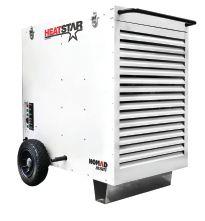
8 heatstarbyenerco.com
Nomad tent and construction heaters are available in dualfuel, natural gas or liquid propane and now in new single fuel liquid propane models. Nomad offers a variety of standard features that provide party, equipment and rental companies with use flexibility. All three sized models offer a high heat setting for efficient pre-heating and a low setting for fuelefficient heat maintenance. Nomad heaters feature largehorsepower motors delivering high CFM for broad heat distribution. The high limit switch is reset by simply turning the power off and then restarting the heater. No tools or mechanical aptitude are required to accomplish the task. The HS115TC runs at 115,000 BTU on high and 80,000 BTU on low. The HS190TC operates at 190,000 BTU on high and 130,000 BTU on low. The HS250TC functions at 250,000 BTU on
high and 175,000 BTU on low. Nomad heaters are currently stocked in Mississauga.
8 wackerneuson.com
Frozen ground doesn’t need to be an issue hampering winter construction. Hydronic surface heaters, also known as ground heaters, can be used for thawing and maintaining soil temperature for cold weather construction from excavation, commercial concrete preparation and curing to emergency utility repair. Using hydronic surface heaters is a cost-effective way to prevent scheduling delays for construction projects and keeping jobs running smoothly even in the extreme temperatures. The Wacker Neuson E3000 has been engineered for reliable performance and troublefree setups with up to 140

hours of continuous run time. It is meant to help keep winter construction going. Providing maximum flow and ensuring consistent surface heat delivery, the E3000 thaws or cures up to 6,000
To advertise in this section, contact Danielle Labrie.

Phone: 226-931-0375
Fax: 519-429-3094
Email: dlabrie@annexbusinessmedia.com
square feet with two hose zones. The equipment has positive displacement pumps which provide steady flow and consistent heat delivery for thawing and curing when compared to centrifugal pumps. The pump design allows for vertical flow of up to 250 feet which is suitable for elevated deck applications. Two pumps allow delivery of maximum BTUs per hour and also provide for emergency back-up flow to ensure heating in critical applications such as curing. With 3,000 feet of hose, split into two continuous loops, the E3000 allows for single-person set-up and placement. The 1,500-foot loops provide a possible hose run distance of 750 feet from each machine, meaning that elongated areas such as bridge decks can be covered with fewer machines without any accessories. Visible from a distance, a performancemonitoring strobe light indicates that all systems are operating properly. Several options are available including a three-kilowatt or six-kilowatt extended-run, a liquid-cooled diesel generator and a singlepoint lifting bail.
RENTAL SUMMIT:
Heat coming Sept. 9. Register at canadianrentalservice.com.
by Tara Jacobs
The last three months in the event rental industry have been downright dire. Weddings, county fairs, conferences and tradeshows have all been cancelled. As an event planner, I’ve been anxiously watching the news for signs of reopening. As for the return of “mass gatherings,” that’s definitely months away. But is it fair to group small to mid-size events with “mass gatherings?” You really can’t compare an NHL game or concert to a conference or trade show that welcomes a couple hundred attendees over the course of a day. In-person events were the first to shut down and will be the last to come back. But how long can the average event rental owner wait? Will the vendors I’ve built trusting relationships with be there for me when events make their comeback?
To find out how these operators are weathering the storm, I called Kevin Legallais, owner and president of Boneyard Event Services, located in Mississauga, Ont. When I think of events, the word “pivot” comes to mind. I can’t count the number of times Kevin’s team has pivoted for me, from lastminute floor plan tweaks to helping vendors set up a booth. While I initially thought event rental stores could turn this crisis into an opportunity, I learned it’s not that simple.
For example, “brewers can ‘pivot’ to make sanitizer. And some custom shops can plexi-glass their way into covering some costs to get through. But when you have the basics, like tents, pipe-anddrape and rental tables, it is hard to turn them into something else,” says Legallais. If a restaurant is looking for tables and chairs to expand their patio, it’s cheaper to buy these items than rent long-term.
While many industries have had their hardships featured in the news, I asked Kevin why the event space hasn’t garnered the same attention. He describes our industry as “the invisible economy.” Legallais continues, “I was happy to see something that started in Germany, which was the distinction that business events should not be considered as mass gatherings, such as concerts or sporting events, where everyone is in one place at one time. Trade and consumer shows can provide more controlled measures.”
But what about Canada? Do we have any programs

to help rental owners, who undoubtedly carry the huge overhead to house rental products?
“Getting to a reasonable agreement with your landlord is paramount to surviving in a time with little or no revenue,” says Legallais. “The Canada Emergency Commercial Rent Assistance program isn’t working as a whole and hopefully it gets changed to positively support those of us who need it desperately to survive.”
In anticipation of a return to in-person events, Boneyard has made a concerted effort to “devise ‘the new way’ of thinking outside of the booth.”
While you’ll need to be mindful of cost, think small and see what controls you can implement quickly.
“We are looking at efficient solutions to sanitize our equipment before it goes out to each event,” says Legallais. This might include “sanitization steamers for use in the warehouse as equipment is prepped, as well as a service to exhibitors.”
Use this down time to develop new protocols for your staff. “Take this time to evaluate your business. Most of us are so busy during the regular cycle that we don’t find time to really dig in to our processes, offerings, opportunities and focus,” says Lagallais.
Encourage pre-orders through deeper discounts and marketing communications to minimize contact on site. If space permits, promote the use of transportation services and advance warehousing in order to minimize truck deliveries during move in and out. When events get the green light to proceed, these are some of the new items and services Boneyard will offer as part of their standard rental lineup: clear vinyl divider curtains between booths; plexi shields at registration counters; floorplan design and signage supporting traffic flow and distancing; hand sanitizing stations and outdoor queuing shelters.
While we all sit tight, let your customers know what your best practices will be when business resumes. As Legallais notes, “It will take communication, collaboration and collectivity to come back.”
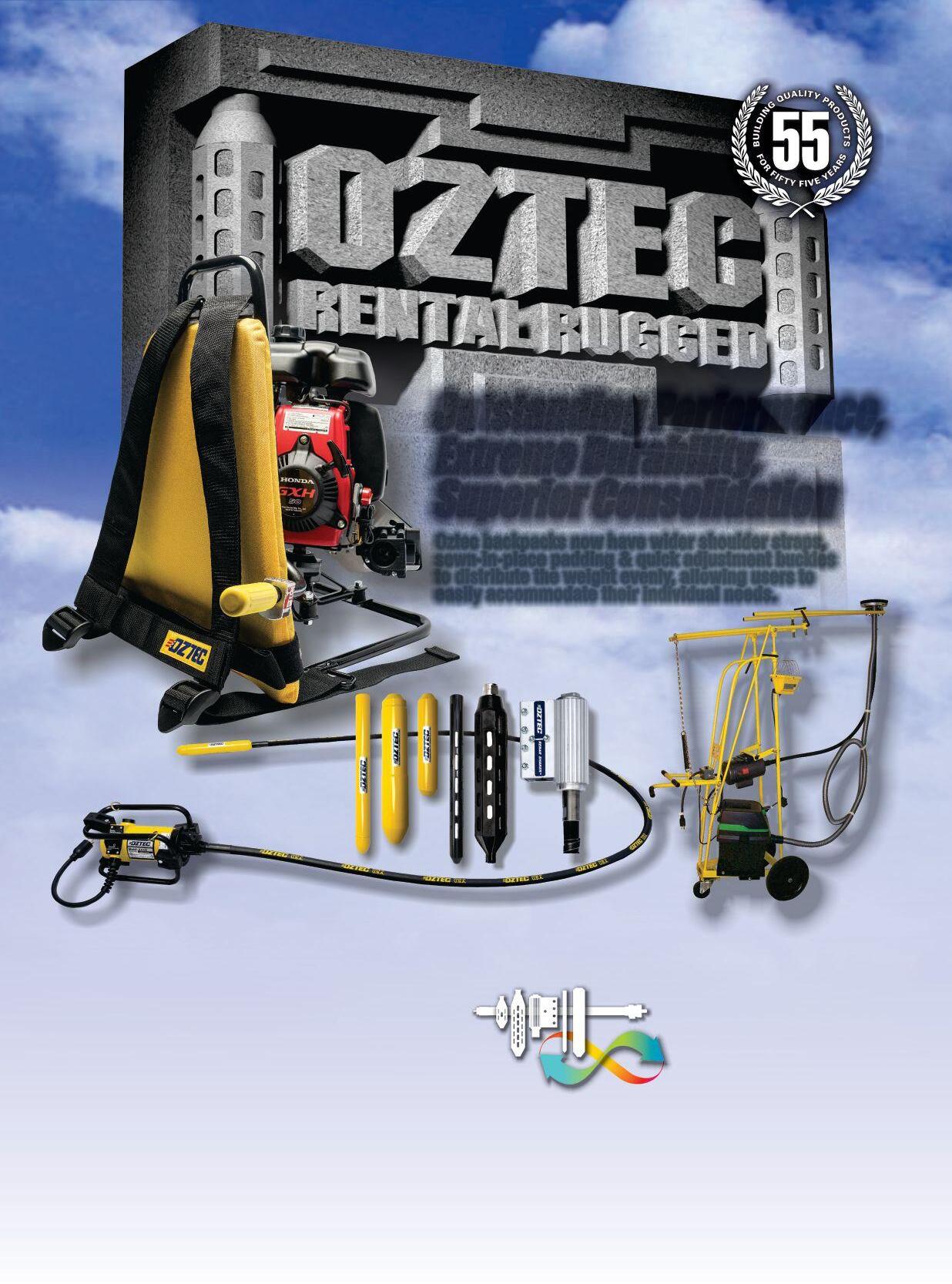
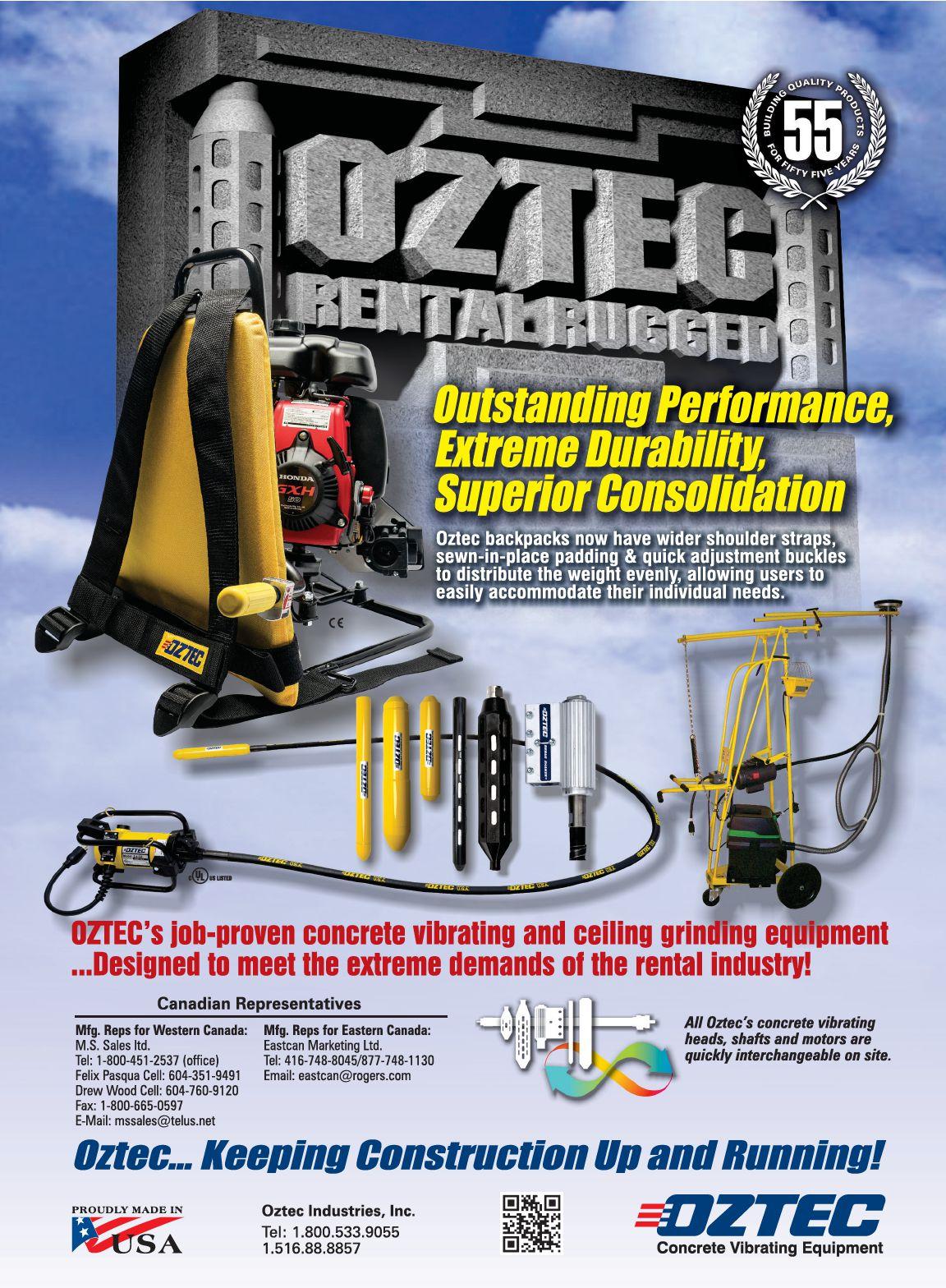

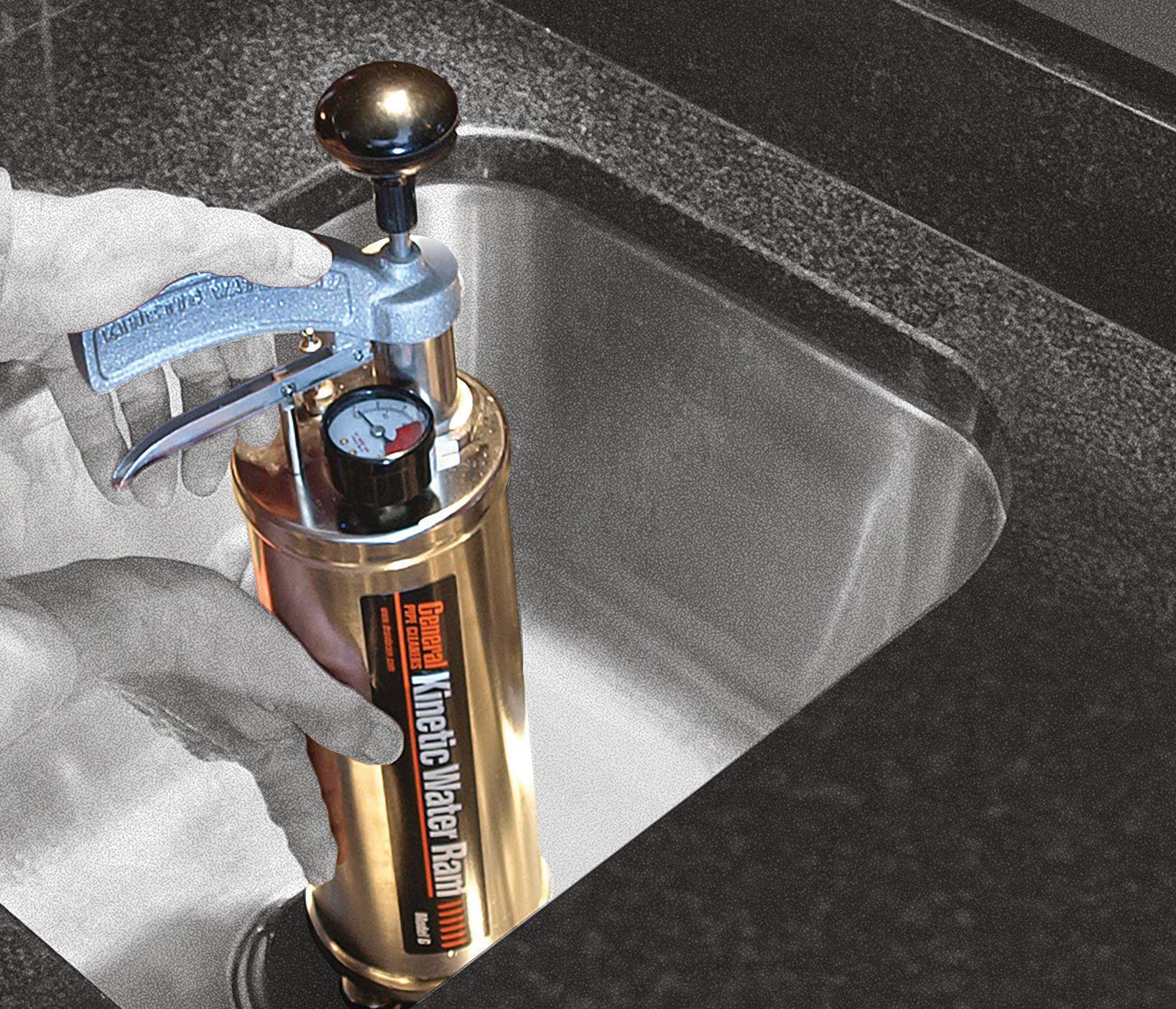
Clearing clogged sinks, tubs and laundry drains couldn’t be easier. With the Kinetic Water Ram, your customers just pump it up, put it in the drain and snap the trigger. The durable, all-metal Ram has a self-contained pump and pressure gauge, so users can hit the stoppage with just the right amount of force.
The Ram uses a burst of compressed air that bypasses vents and stacks to hit the stoppage head-on, yet it won’t harm pipes. And best of all, the all metal Ram is made right here in the USA.
See it in action at www.drainbrain.com/ram, or call the DrainBrains at 800-245-6200 for more information.